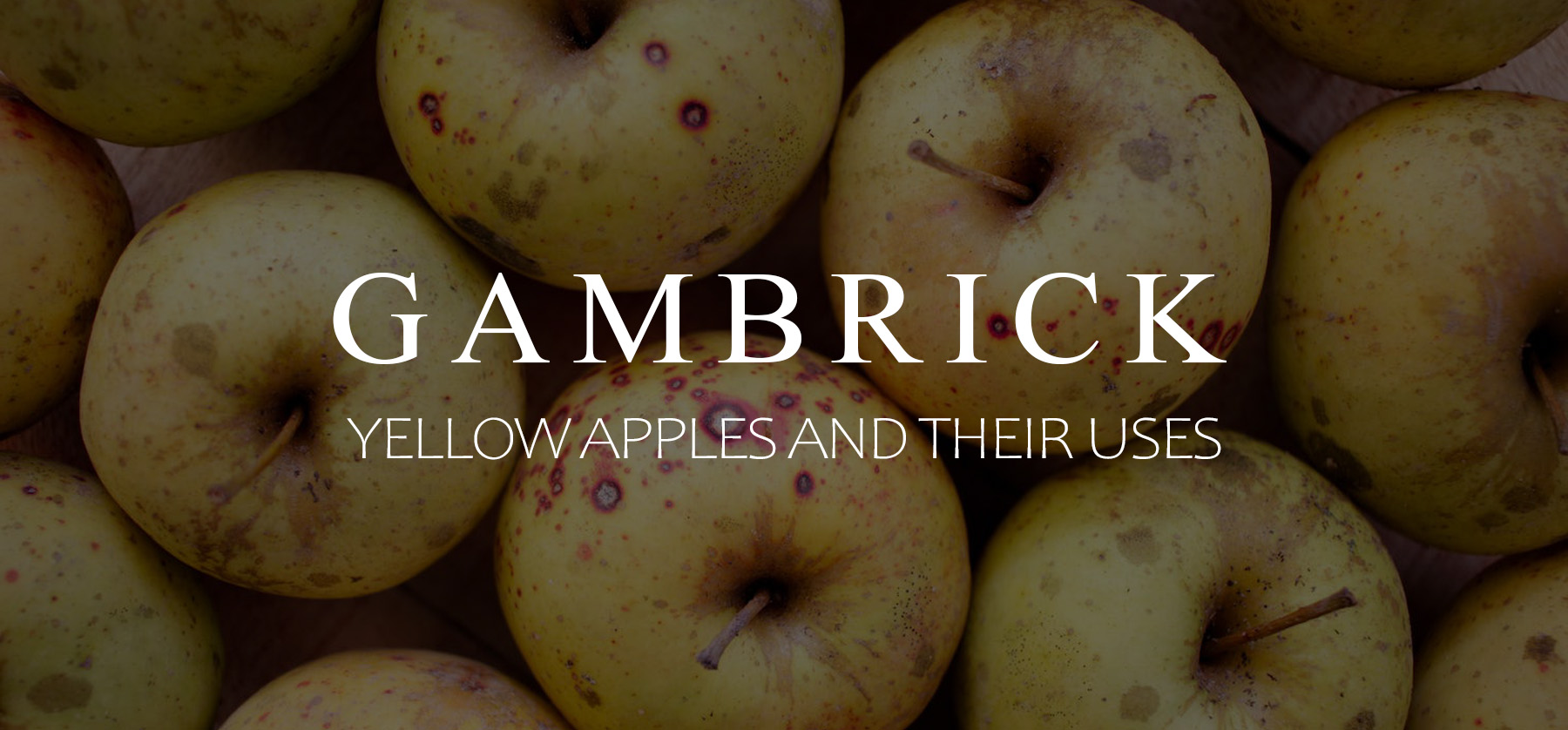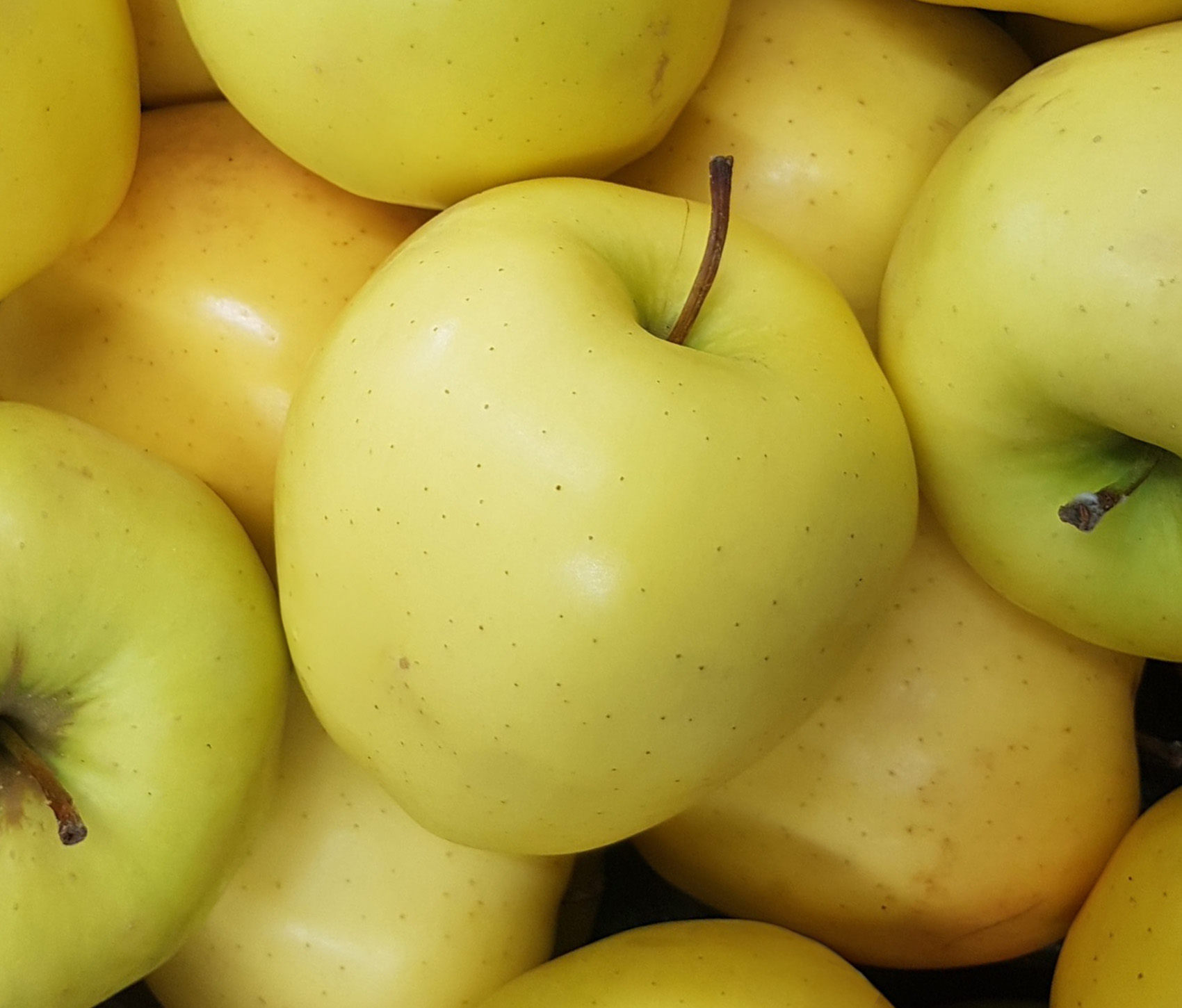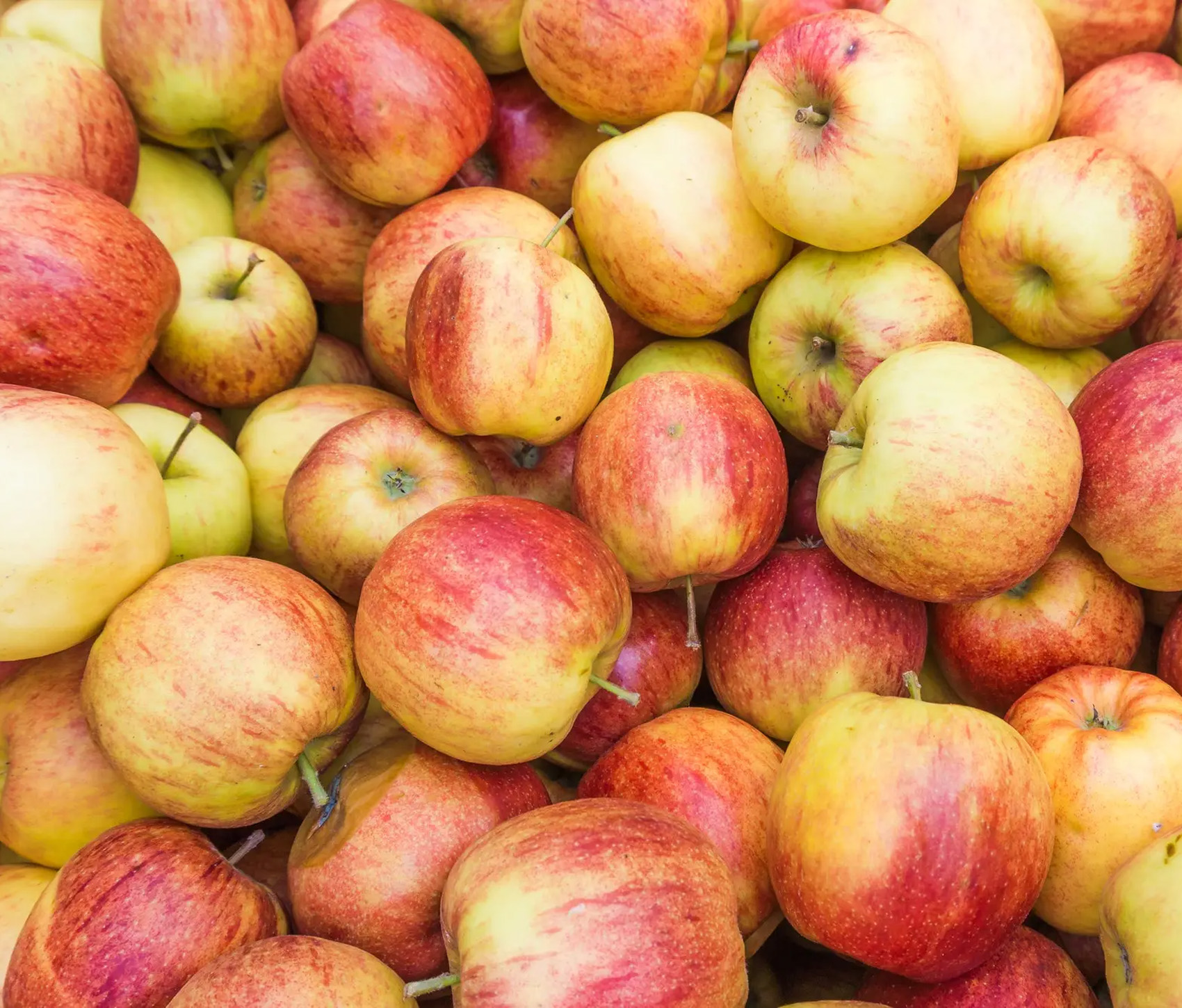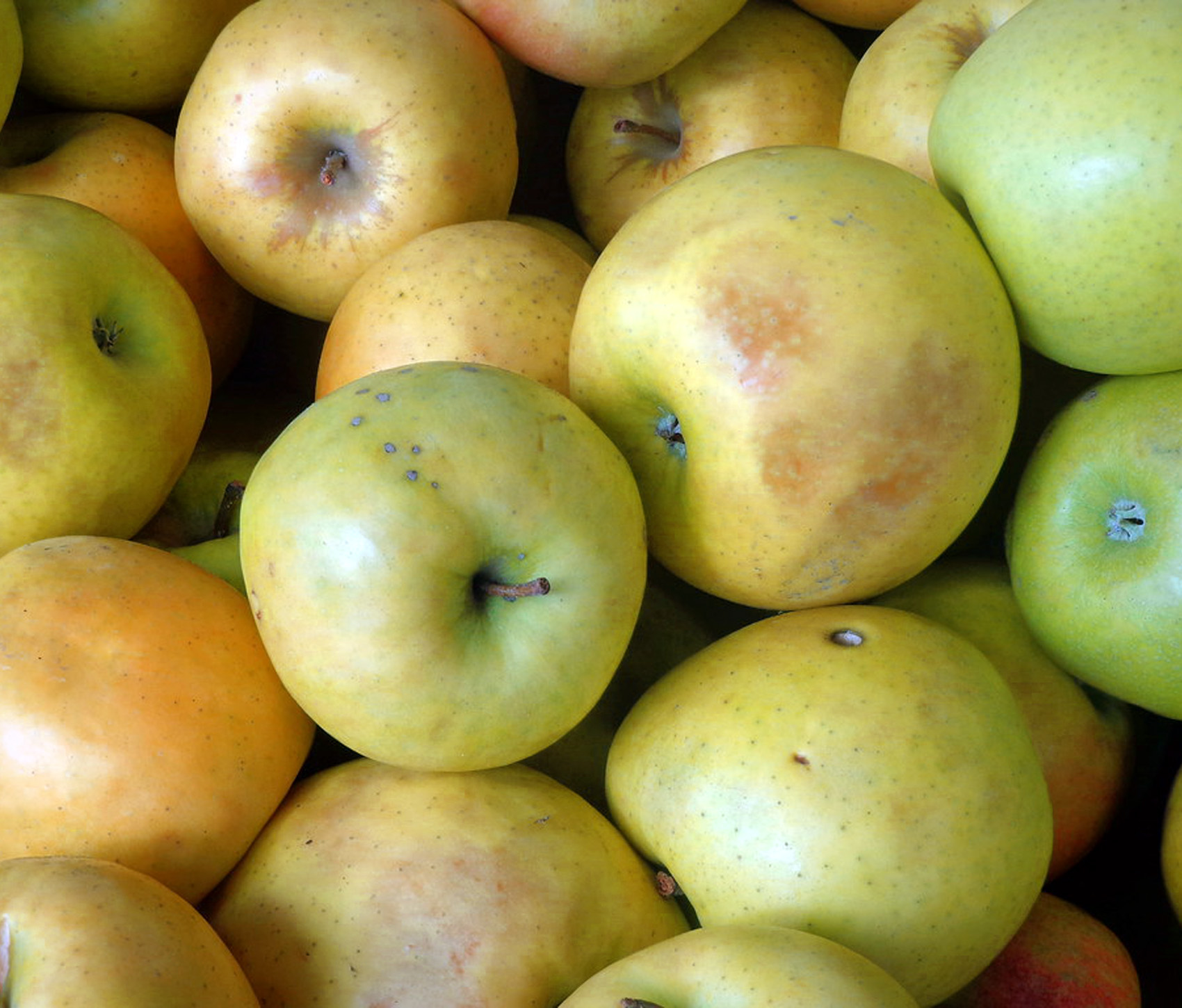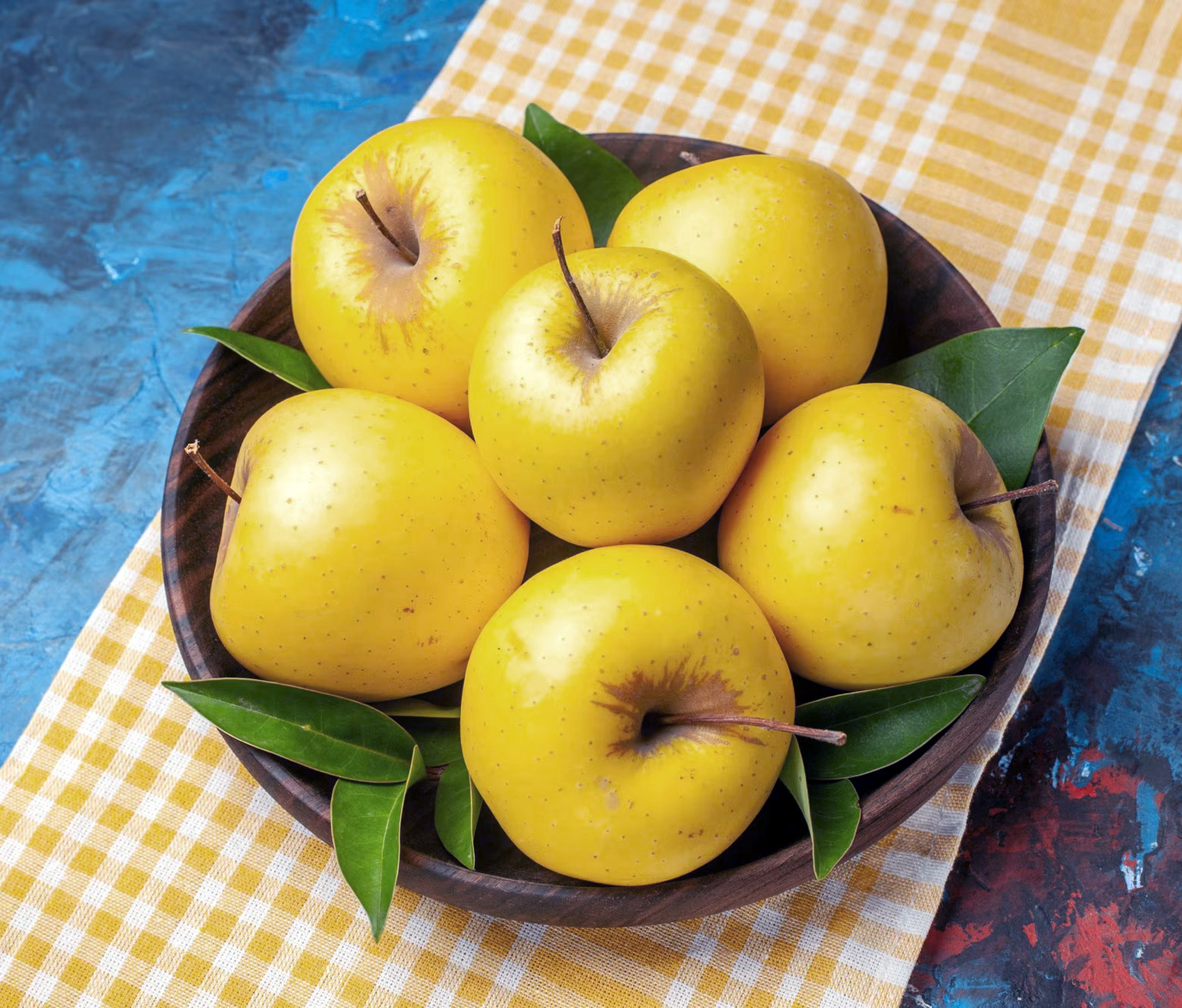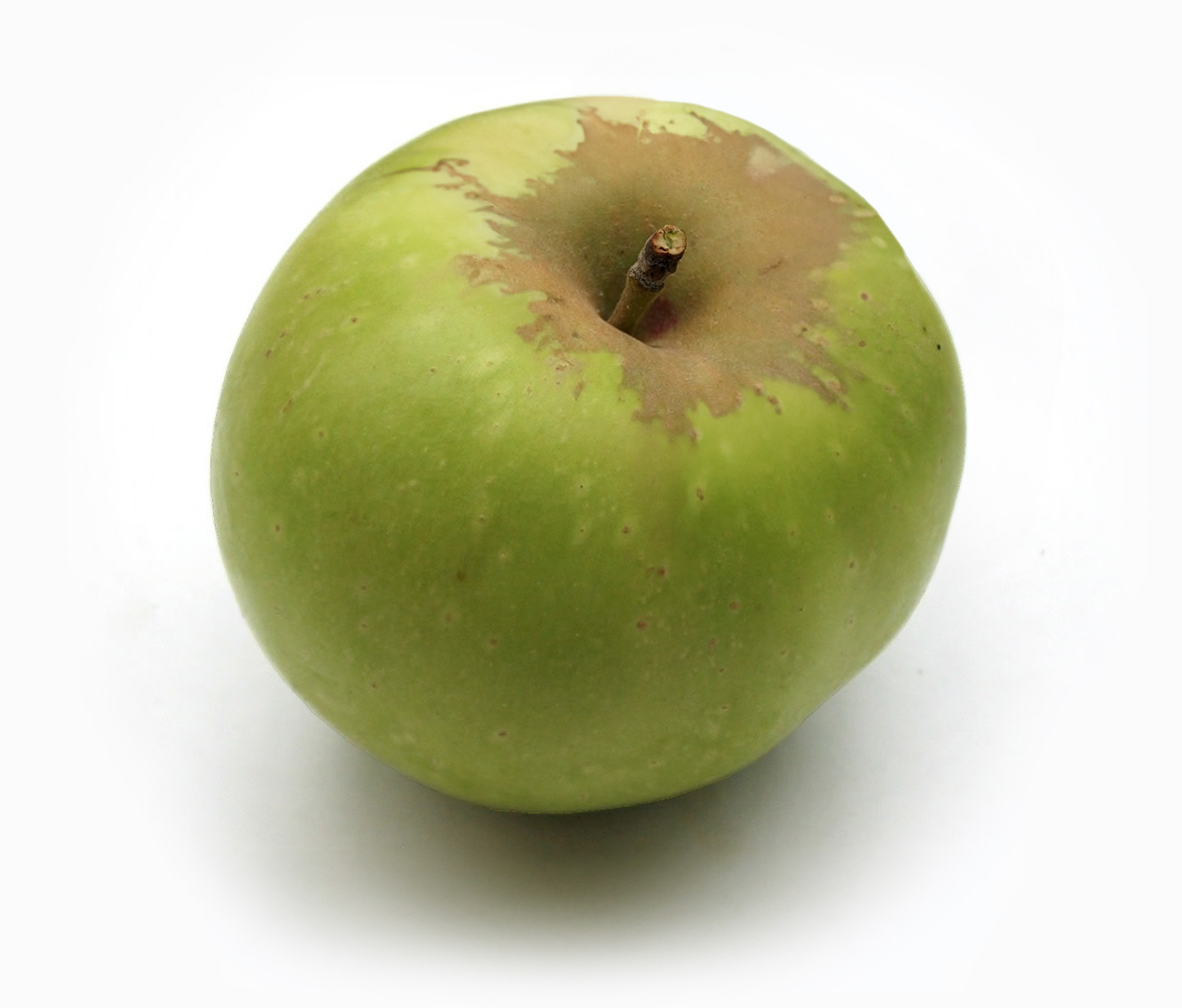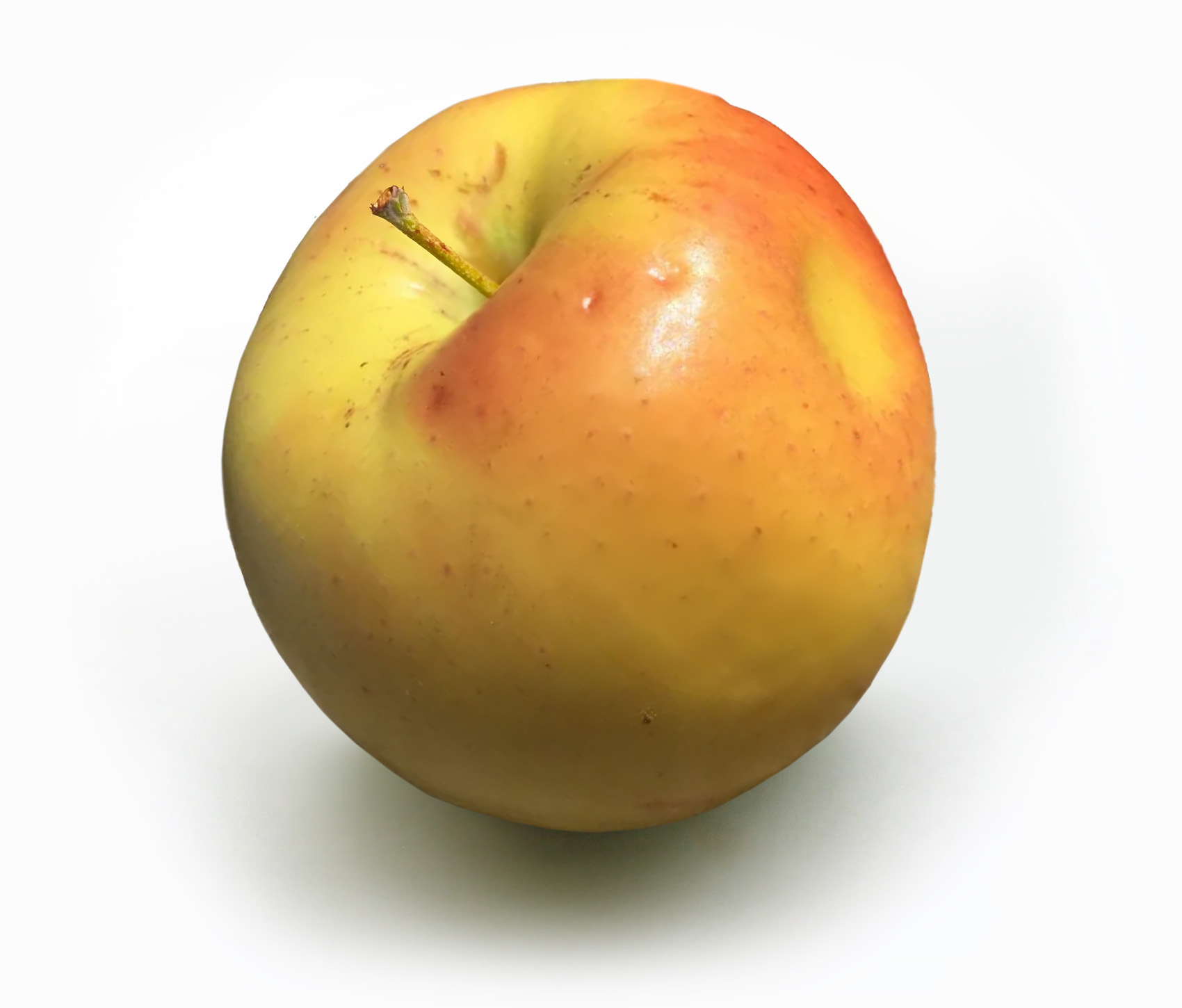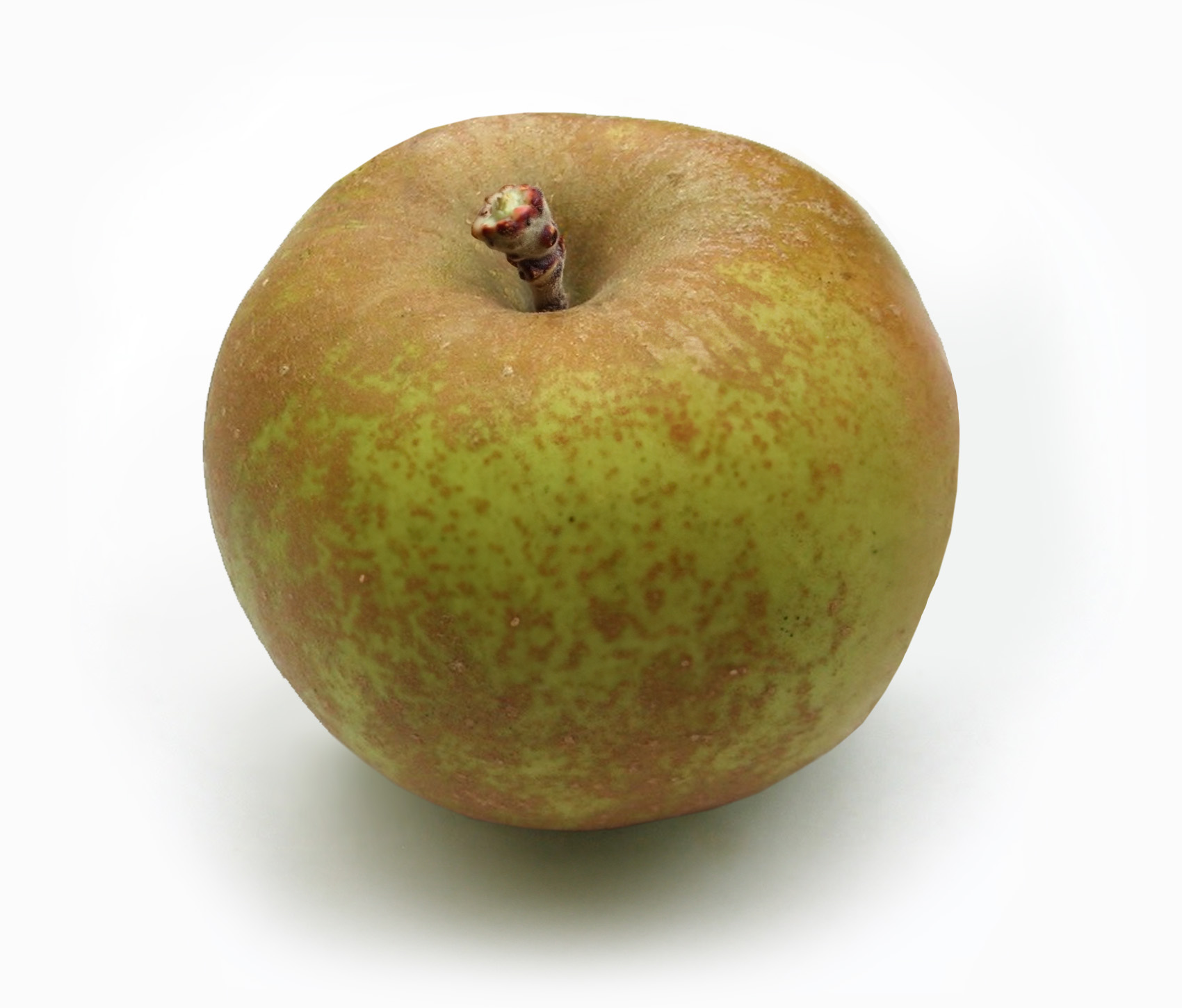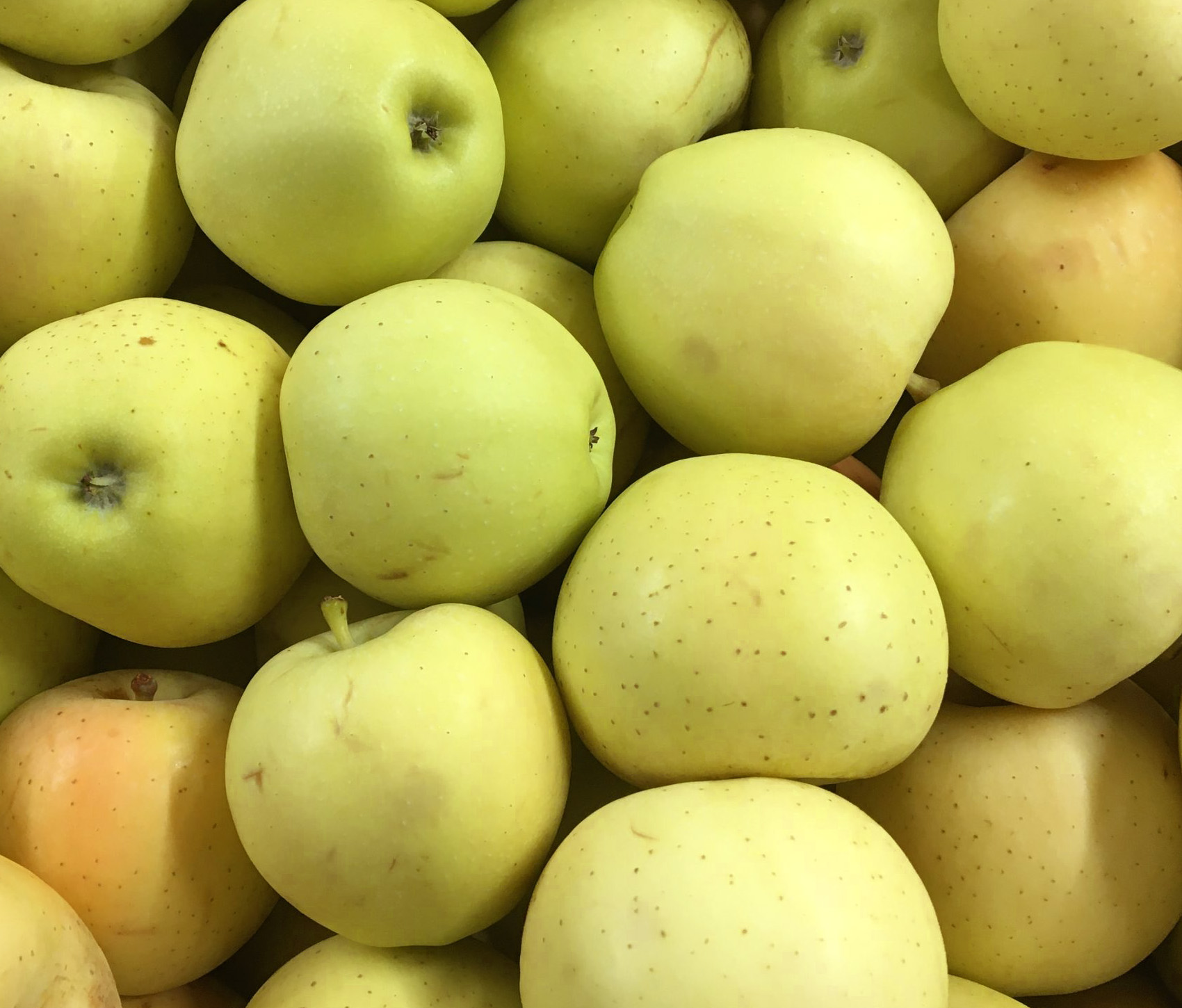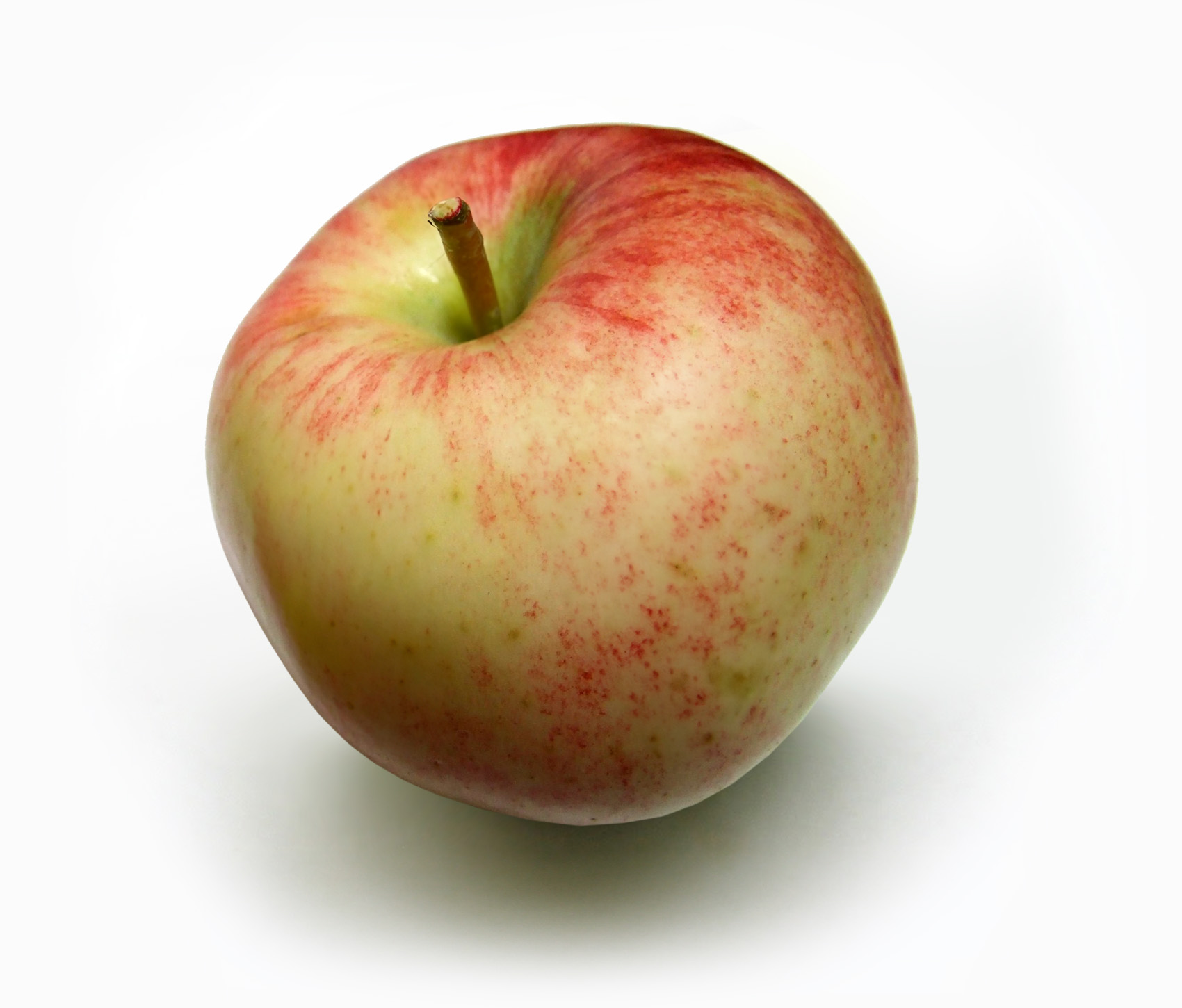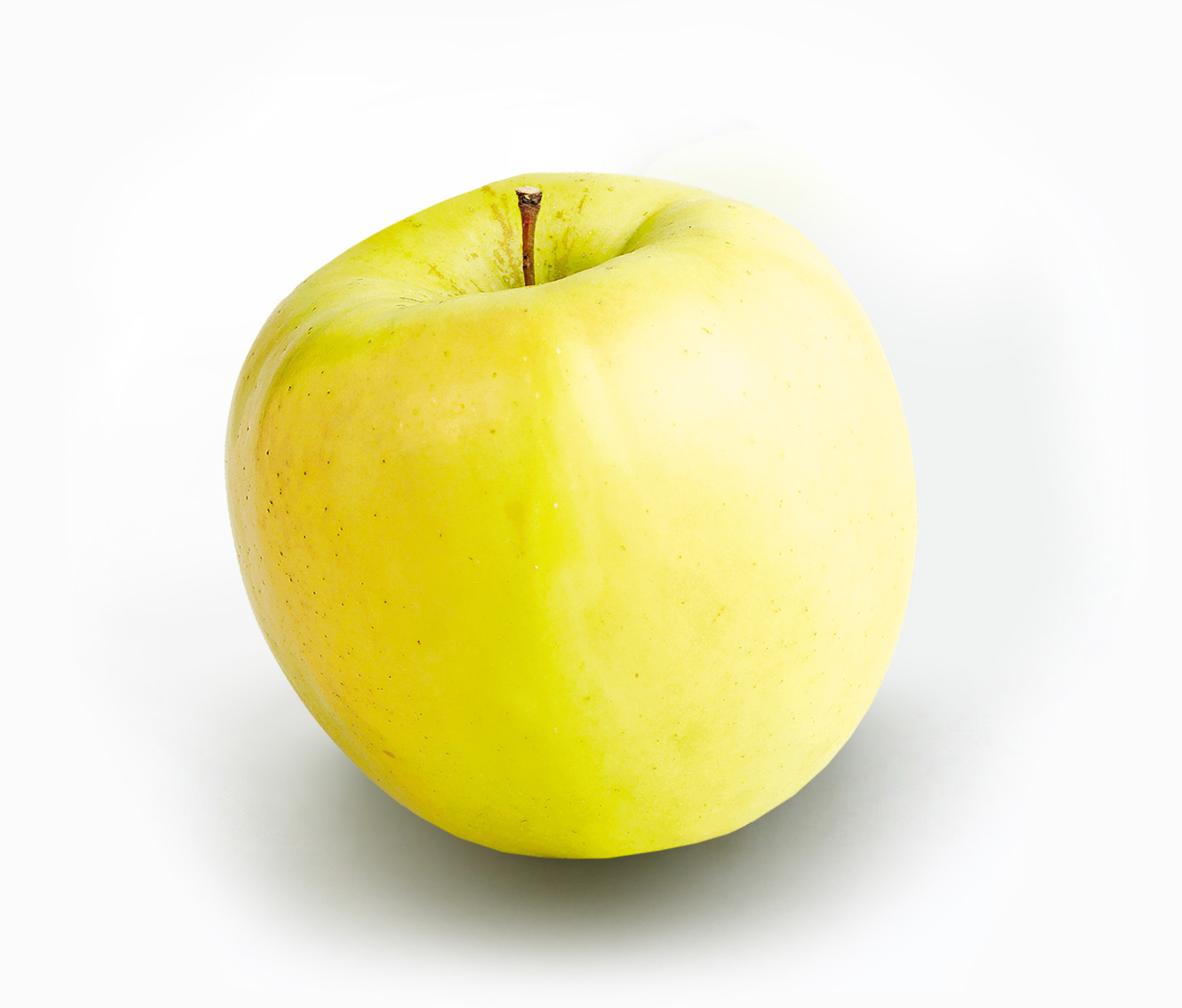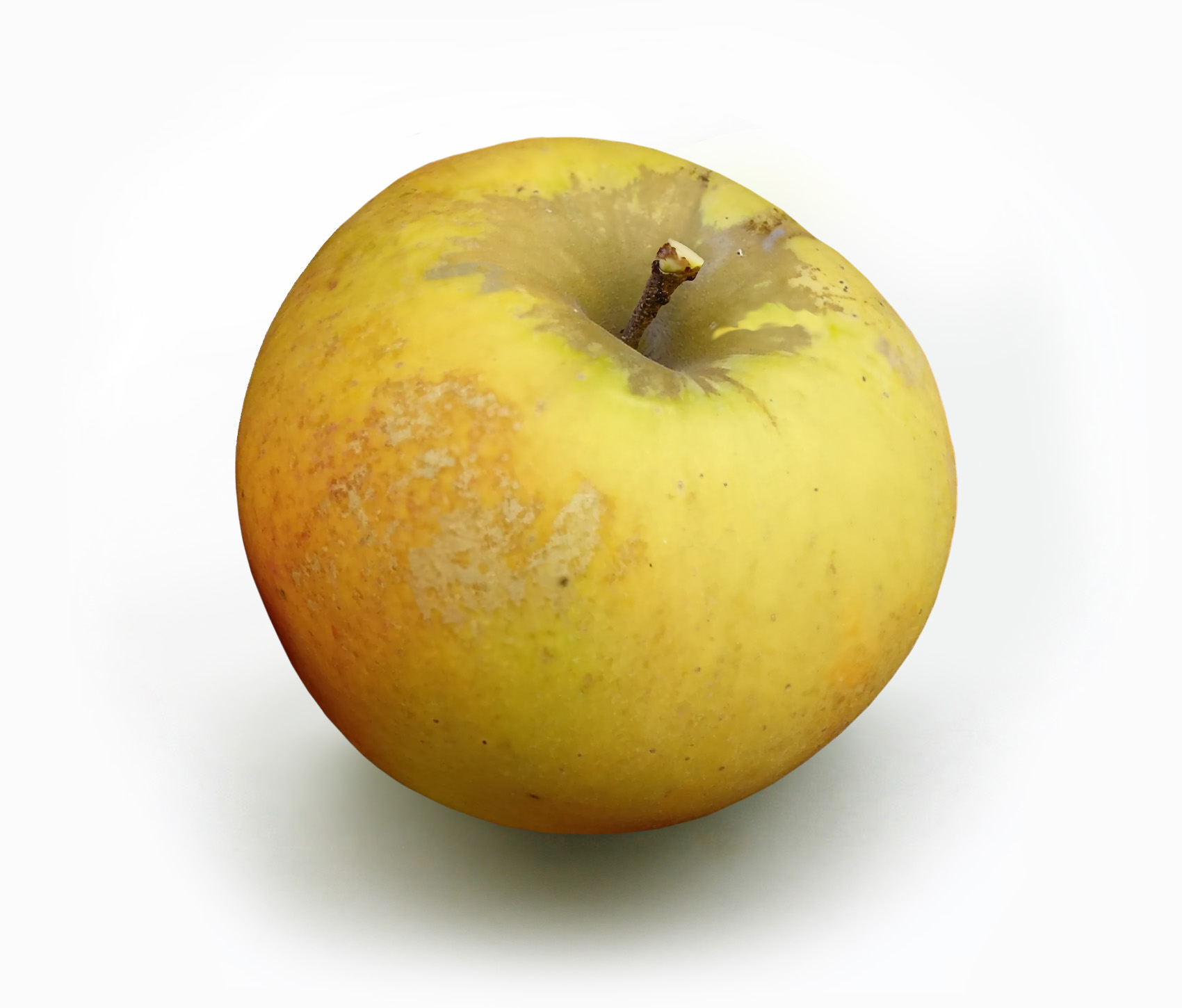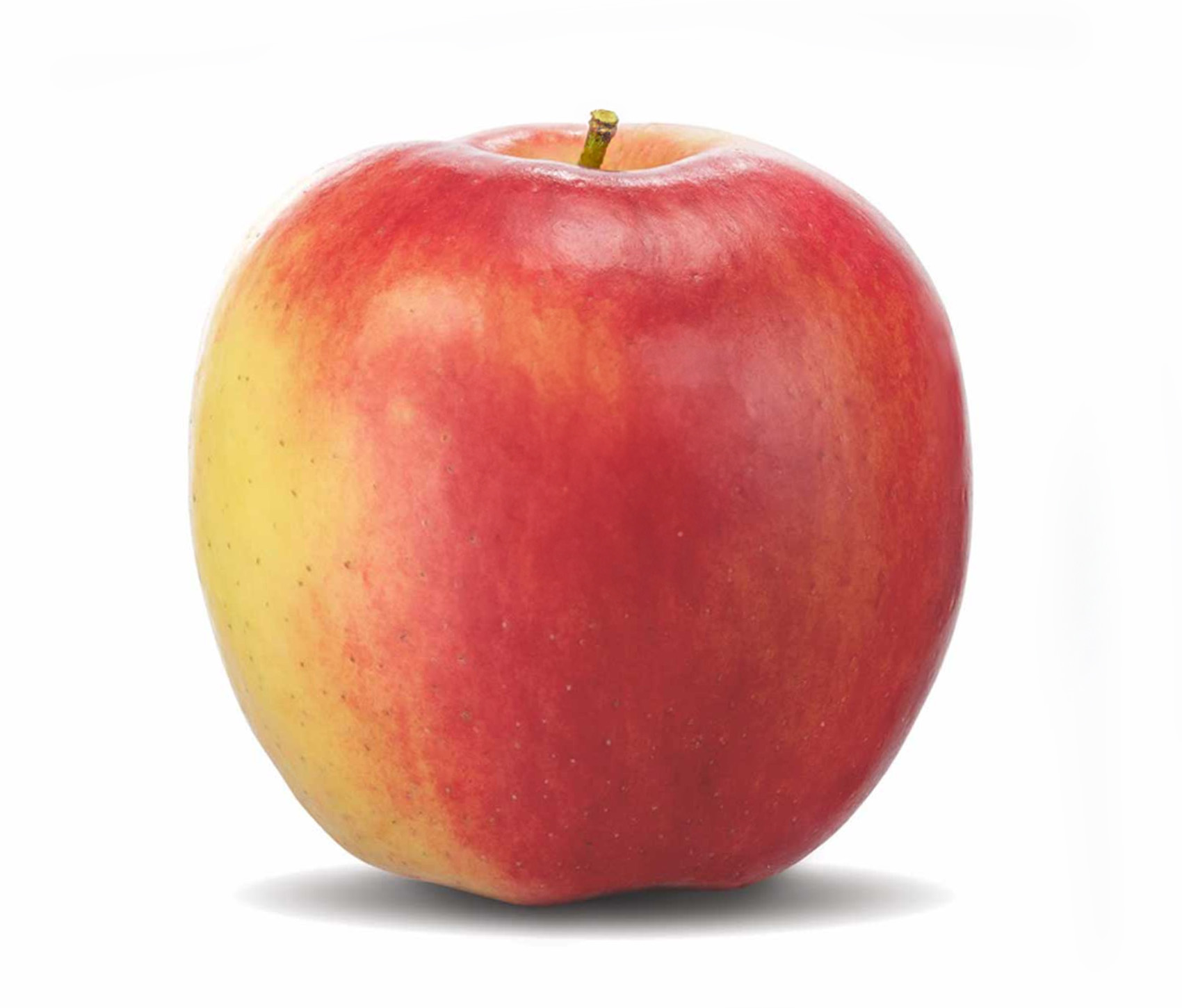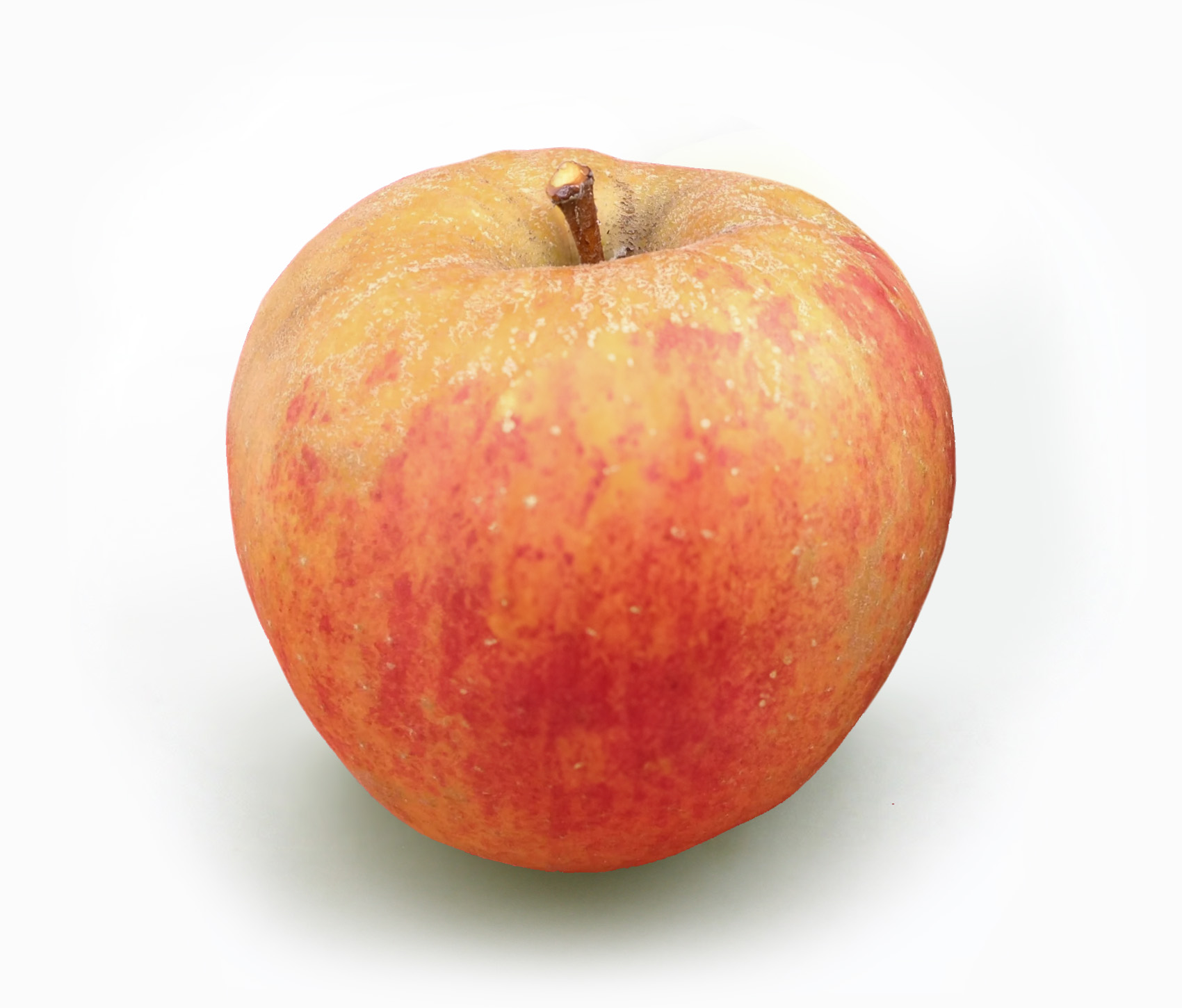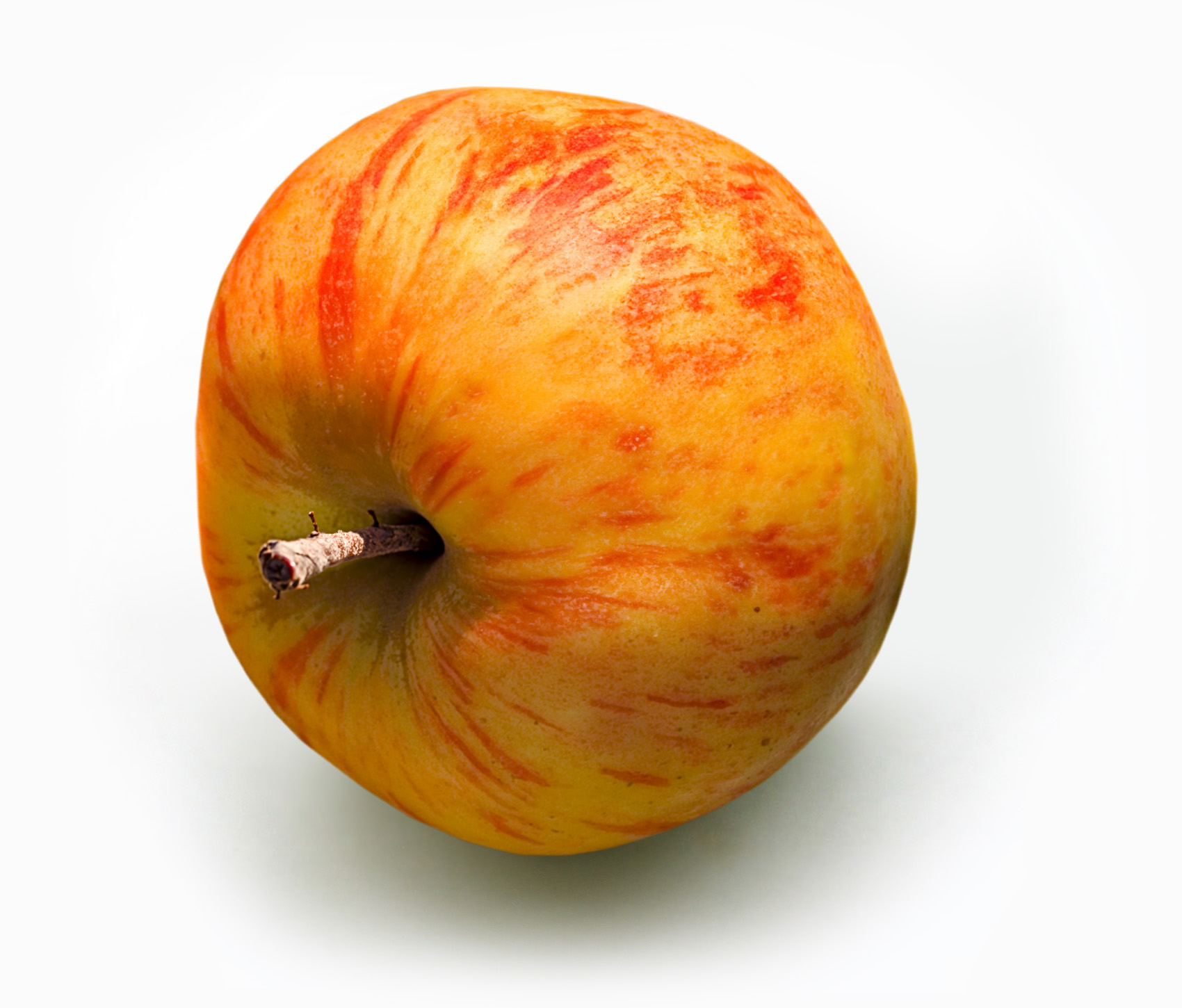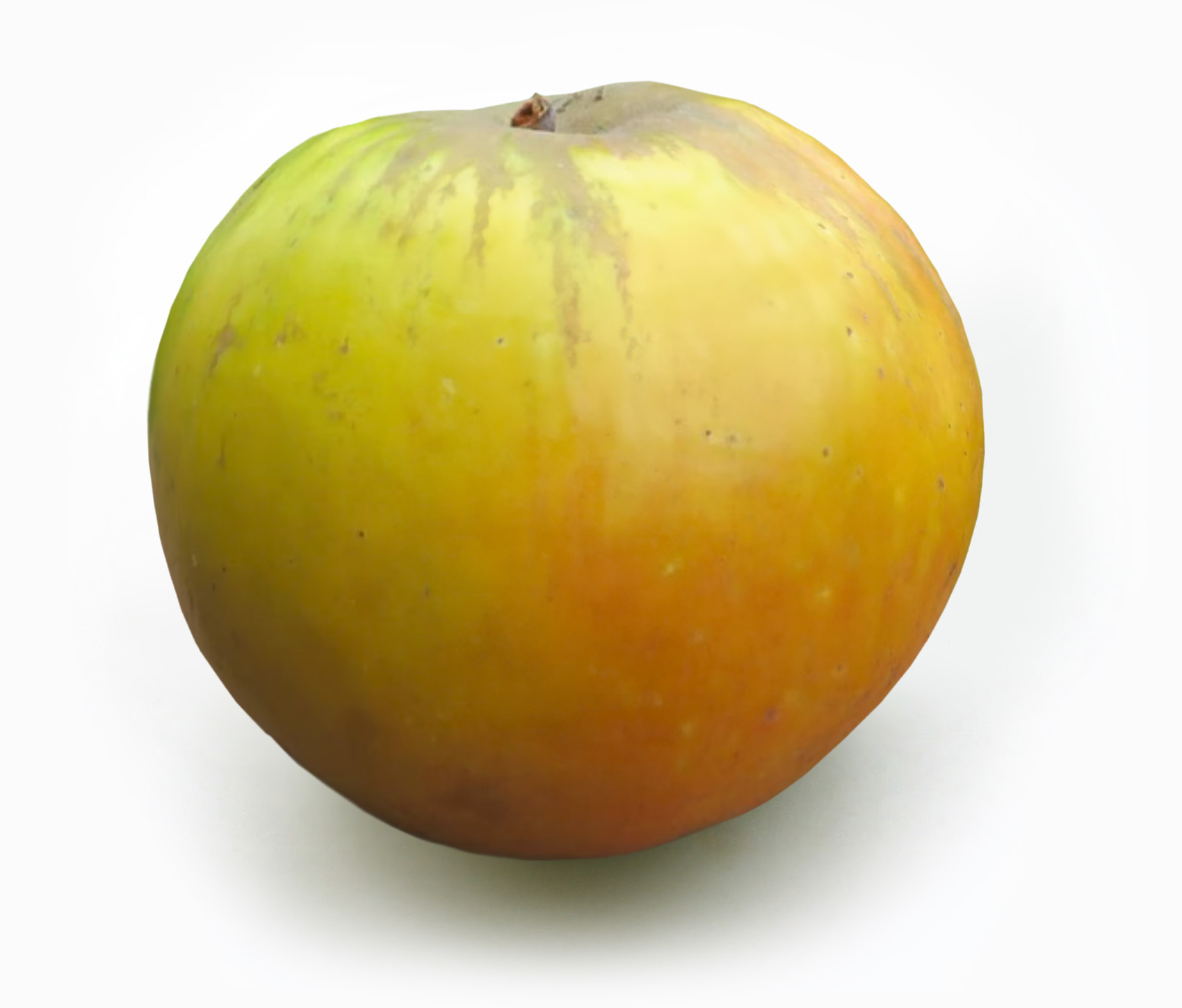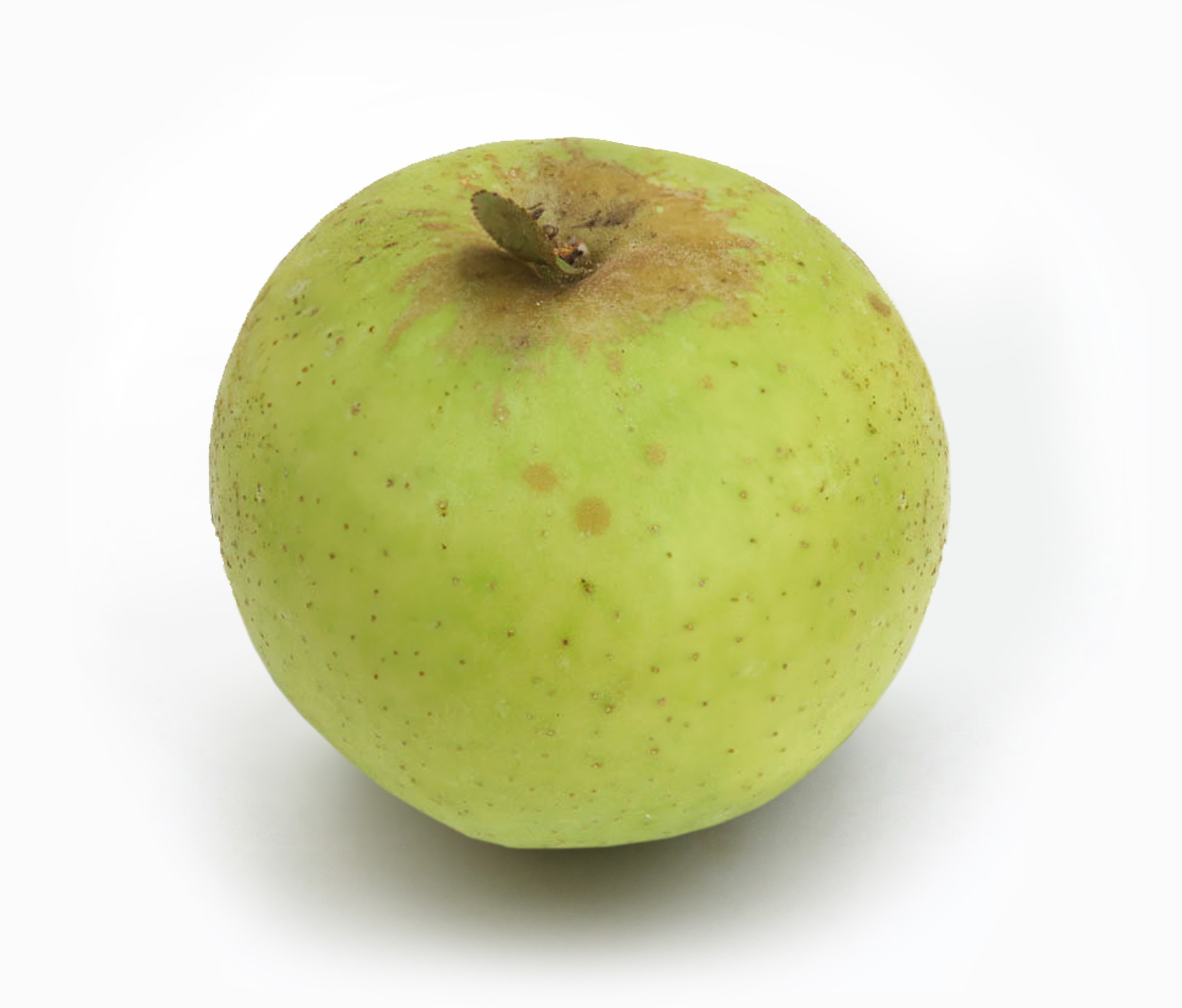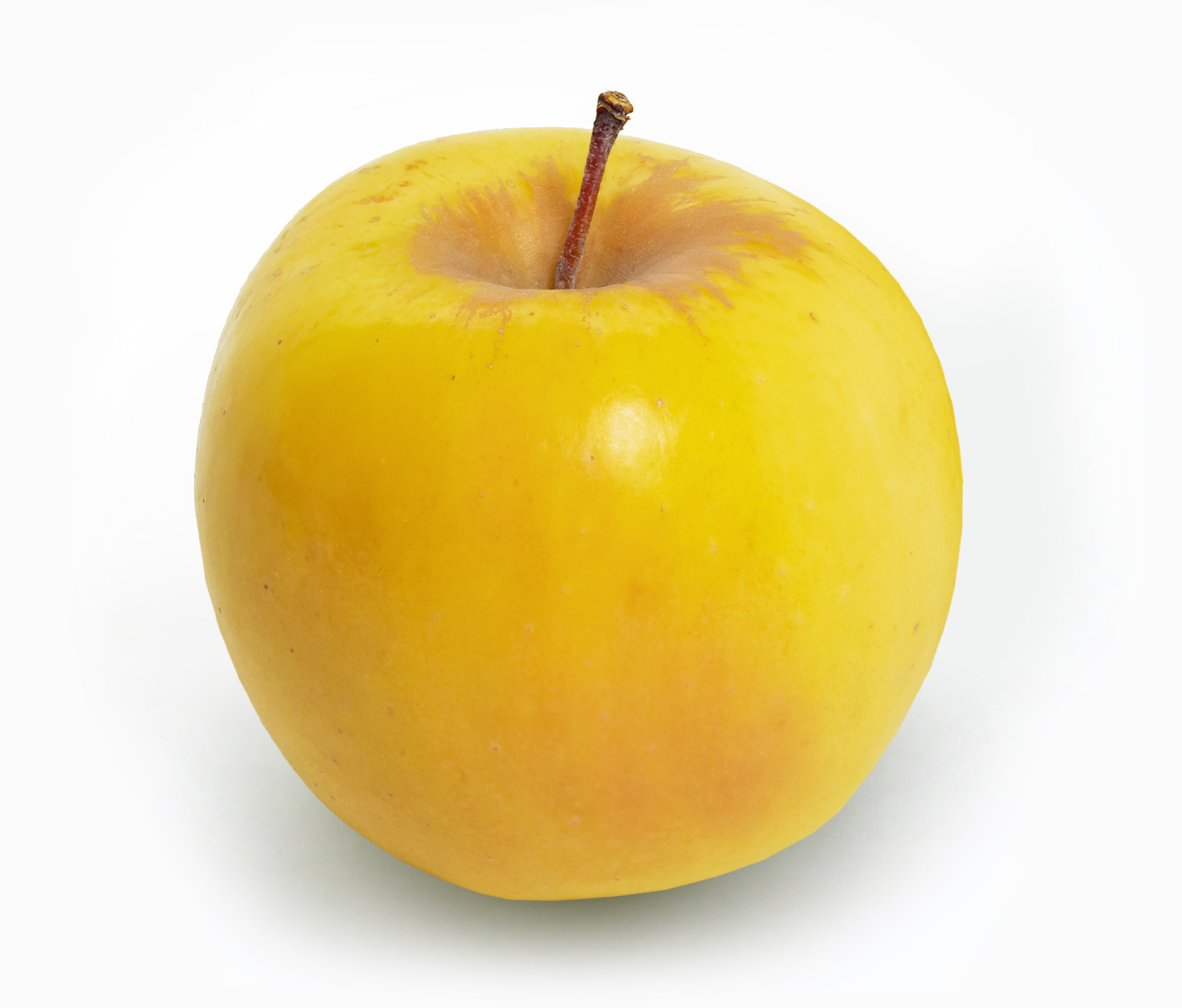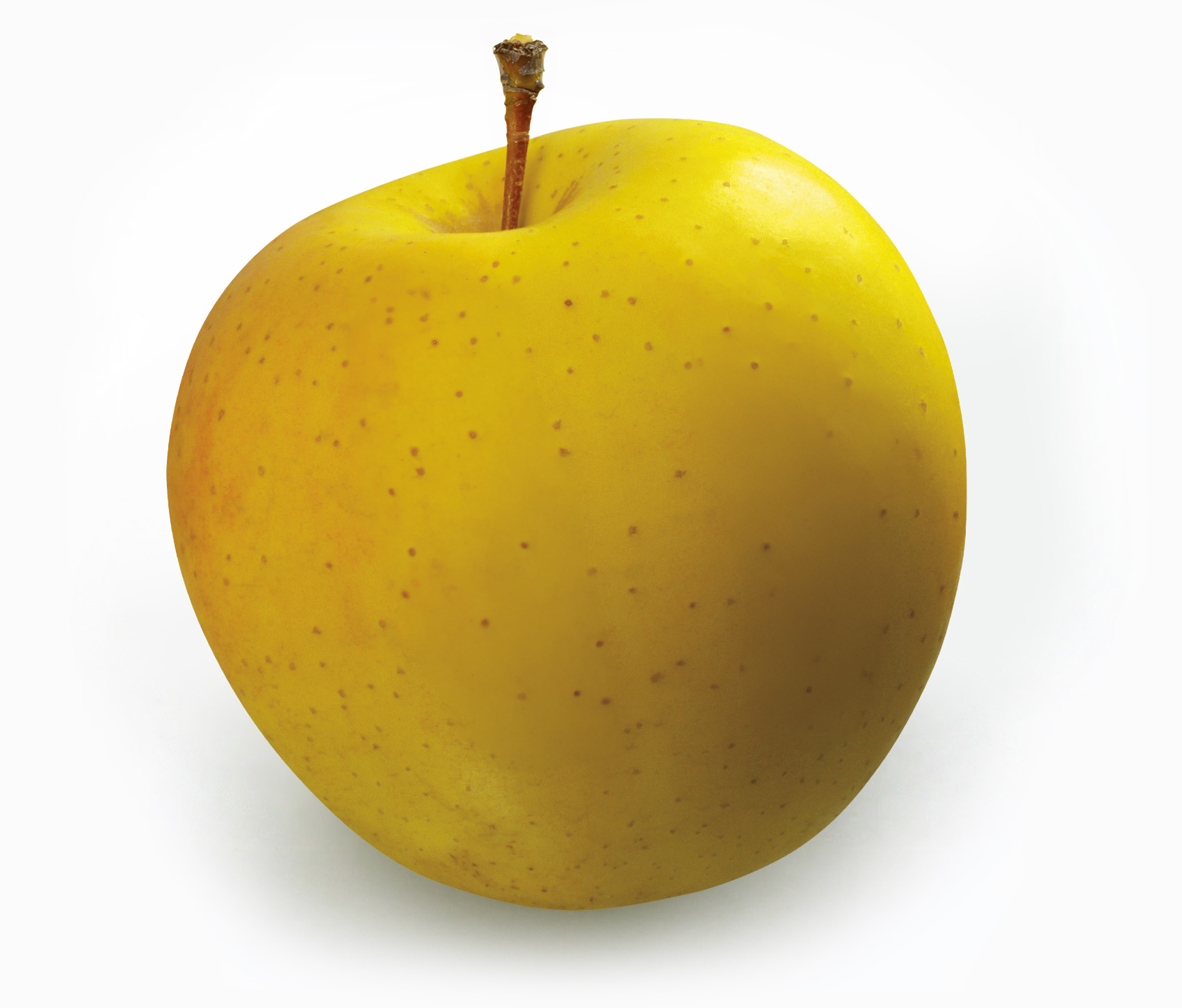24 Yellow Apples And Their Uses
Apples come in a variety of colors which includes red, the most famous, green, the most sour, and yellow. Although yellow apples are the least well-known color, they’re among the best, with a sweet, tart flavor and a crisp bite. Yellow apples can be used in salads, for baking, in applesauce, to make cider, jams, preserves, chutneys, or eaten raw. They have a sweet taste with varying levels of tartness, pleasant juiciness, and a crisp texture. The flavor profile of yellow apples can include notes of honey, citrus, and tropical fruits, with subtle floral or spicy undertones. The sweetness, tartness, and flavor intensity level can vary between different yellow apple varieties, so it’s always best to try a particular type to fully experience its unique flavor.
There’s something special about a yellow apple’s slightly tart and sweet bite. With over 100 types of yellow apples to choose from worldwide, most of which are hybrids of other varieties, there’s plenty to try and experiment with in your next cider or pie.
In this article, I’ll discuss 24 types of yellow apples and their uses. I’ll also discuss some fun facts about what makes an apple yellow, how they taste, which ones are sweetest, and what they’re best used for.
Types Of Yellow Apples & Their Uses
Yellow apples can be used to make pies, applesauce, cider, jams, preserves, chutneys, or eaten raw. They generally have a tart and sweet flavor and a crisp bite. But the level of tartness and sweetness varies by type, so it’s important to choose the right yellow apple for your next recipe.
Classic Yellow Apples
There are over 100 types of yellow apples you can try and more hybrid varieties are being made all the time. But my favorites are the classics that have been around since I was a kid. I recommend starting with these because they’re among the best and have been eaten raw and used in a variety of recipes for decades.
- Golden Delicious: One of the most popular and well-known apple varieties of any color, celebrated for its attractive appearance and sweet flavor.
- Jonagold: A popular apple known for its balanced flavor and attractive appearance.
- Crispin: Also known as Mutsu apples, they’re high-quality apples that originated in Japan in the late 1930s. A cross between the ‘Golden Delicious’ and the ‘Indo’ apple varieties, Crispin apples are great in pies, applesauce, and juices.
- Newtown Pippin: Named by Thomas Jefferson, Newtown Pippin apples, also known as Albemarle Pippin, are versatile fruits that can be used in several ways due to their balanced flavor and firm texture.
- Rhode Island Greening: One of the oldest apple varieties in North America, with a history dating back to the 17th century. They can be used in a number of culinary applications due to their firm texture and tangy flavor.
- Winter Banana: A traditional apple variety that originated in the United States in the 19th century. They have a mildly sweet and somewhat tart flavor, with a unique, aromatic quality that some people compare to bananas.
- Roxbury Russet: They’re known for their rich, tart-sweet flavor with a hint of nuttiness, which becomes more pronounced as the apple matures.
- White Pearmain: Known for being especially juicy and aromatic, offering a rich, sweet flavor with subtle notes of spice and a slight tartness.
1. Golden Delicious
The Golden Delicious apple is one of the most popular and well-known yellow apples globally. They’re celebrated for their attractive appearance and sweet flavor. These apples feature a uniform yellow-gold color, which is where they derive their name. But the Golden Delicious apple isn’t just pretty to look at, it’s also packed with flavor. The taste is often described as honeyed, mild, and sweet, with slight hints of spice.
- Golden Delicious apples have thin skin and crisp, juicy flesh.
- They’re quite versatile, excellent for eating fresh out of hand, and equally good for cooking and baking.
- The apples hold their shape when baked, making them a favorite for pies and tarts.
- They’re also slow to brown when cut. This makes them an excellent choice for salads and cheese plates.
One of the reasons for the Golden Delicious apple’s popularity is its wide availability throughout the year. They’re typically harvested in the fall, but their robust nature allows them to be stored and sold year-round.
In terms of nutritional content, Golden Delicious apples are a healthy choice. They’re low in calories and high in dietary fiber, particularly if the skin is eaten. They also contain a good amount of Vitamin C and various other beneficial antioxidants.
Despite the name, the Golden Delicious is not closely related to the Red Delicious apple. It’s believed to be a relative of the Grimes Golden and the Golden Reinette. The Golden Delicious originated in the early 20th century in West Virginia, USA, and has since been used in the breeding of many other apple varieties, including the Gala, Ambrosia, and Mutsu.
Uses
Golden Delicious apples are versatile and can be used in various ways:
- Raw Consumption: Golden Delicious apples are excellent for eating raw due to their sweet flavor and crisp texture. They’re a popular snack and lunchbox apple.
- Salads: Their slow oxidizing nature makes them perfect for fresh salads as they don’t brown quickly after being cut.
- Cooking: Golden Delicious apples hold their shape well when cooked. This makes them an excellent choice for dishes like apple tarts, pies, and galettes.
- Baking: They can be used in baked goods such as muffins, breads, and cakes due to their sweet flavor and ability to maintain their form.
- Sauces: These apples are commonly used to make applesauce because of their sweetness, which can reduce the need for additional sugar.
- Juicing and Cider: Golden Delicious apples are used in making apple juice and cider, contributing to a sweet and mild flavor profile.
- Preserves: Their sweet flavor and firm texture make them ideal for jams, jellies, and other preserves.
- Pairing with Savory Dishes: These apples can be roasted or sautéed and served with savory dishes, such as pork or poultry. Their sweetness nicely complements savory and spicy flavors.
It’s important to note that when cooking or baking with Golden Delicious apples, you may need to adjust the amount of sugar in the recipe since these apples are naturally quite sweet.
2. Jonagold
Jonagolds are a popular yellow apple known for their balanced flavor and attractive appearance. They’re a cross between two classic varieties: the sweet, yellow Golden Delicious and the tart, red Jonathan apples. The resulting fruit combines the best traits of its parents, producing an apple that’s both sweet and tart, with a complex, aromatic flavor that’s widely appreciated.
In terms of appearance, Jonagold apples can vary, but they generally exhibit a unique blend of yellow and red hues. The base color of the apple is often yellow, derived from its Golden Delicious parent. This yellow color is overlaid with crimson or red, which is inherited from the Jonathan apple.
- The blend of colors can range from light pink to a deep red blush depending on growing conditions, ripeness, and a specific strain of the variety.
- The size of Jonagold apples is generally larger than many other apple varieties.
- They have a round, slightly elongated shape.
- The skin is thin but crisp, and the flesh is juicy and crisp, offering a satisfying crunch when bitten into.
Jonagold apples are very versatile.
- They’re excellent for eating fresh out of hand, thanks to their delightful flavor and texture.
- They also hold up well when cooked, making them a good choice for pies, tarts, and applesauce.
- Jonagold apples are also a popular choice for cider-making due to their balance of sweetness and acidity.
Overall, Jonagold apples are cherished for their distinctive, harmonious blend of flavors, their beautiful yellow and red coloration, and their versatile usage in both fresh and cooked applications.
Uses
Jonagold apples are extremely versatile and can be used in various ways due to their balanced sweet-tart flavor and firm texture:
- Eating Fresh: Jonagold apples are excellent for eating out of hand. Their sweet and slightly tart flavor, combined with their crunchy texture, makes them a popular choice for a snack.
- Baking and Cooking: Jonagold apples hold their shape well when cooked, which makes them an ideal choice for baked goods like pies, tarts, and crisps. They’re also commonly used in cakes, muffins, and breads.
- Salads: They add a sweet, tangy crunch to salads. They pair well with a variety of ingredients, such as nuts, cheese, and other fruits.
- Sauces: These apples are suitable for making applesauce or apple butter due to their balanced flavor, which can eliminate or reduce the need for added sugar.
- Roasting or Sautéing: Jonagold apples can be used in savory dishes too. They can be roasted with meats or sautéed for dishes that benefit from a touch of sweetness.
- Juicing and Cider: Jonagold apples contribute to a flavorful, balanced apple juice or cider, as they bring both sweetness and acidity to the blend.
- Preserves: Their sweet-tart flavor and good cooking properties make them ideal for jams, jellies, and other preserves.
The exact flavor and texture of Jonagold apples can vary based on where and how they were grown. You should always consider this when using them in your recipes.
3. Crispin
Crispin apples, also known as Mutsu apples, are high-quality yellow apples that originated in Japan in the late 1930s. They’re a cross between the ‘Golden Delicious’ and the ‘Indo’ apple varieties.
Crispin apples are known for their distinctive bright green-yellow color. As they ripen, their color typically transitions from a more intense green to a lighter, more yellow hue. The yellow-green skin is usually quite smooth and can sometimes exhibit a slight russeting near the stem.
- These apples are quite large and round, often uniformly shaped with a fair bit of heft to them. T
- he flesh of the Crispin apple is firm, crisp, and juicy, with a creamy white color.
- Crispin apples offer a delightful balance between sweetness and tartness.
- They have a refreshing sweetness akin to that of their Golden Delicious parent, coupled with a slightly tart and tangy edge.
- Some also describe the flavor as subtly spicy.
Crispin apples are incredibly versatile in culinary uses. They’re excellent for eating fresh, thanks to their juicy, sweet-tart flavor and crisp texture. They also hold their shape well when cooked. This makes them ideal for baking applications such as pies, tarts, and cakes. They can also be used in salads, sauces, and preserves, and are great for juicing and cider-making.
On top of their great taste and texture, Crispin apples are also praised for their longer shelf life compared to some other apple varieties. When stored properly, they can keep well for several months, allowing for a prolonged enjoyment period.
Uses
Crispin apples are incredibly versatile and can be used in a variety of culinary applications:
- Eating Fresh: Due to their balanced sweet-tart flavor and crisp texture, Crispin apples are excellent for eating fresh. They make a refreshing snack on their own and can also be sliced and served with cheese or peanut butter.
- Baking: Crispin apples hold their shape well when cooked, making them an ideal choice for baking applications such as pies, tarts, crumbles, and cakes.
- Salads: Crispin apples add a crisp, juicy element to salads. Their slightly tart flavor can complement a variety of salad ingredients.
- Cooking: These apples can be used in savory dishes, including roasted meat dishes where their sweetness provides a pleasant contrast.
- Applesauce and Apple Butter: The balanced flavor of Crispin apples makes them an excellent choice for making applesauce or apple butter.
- Juicing and Cider: Their juicy nature and balanced sweet-tart flavor make Crispin apples suitable for making apple juice and cider.
- Preserves: Crispin apples can be used to make jams, jellies, and other preserves.
- Desserts: Apart from baking, these apples can be used in various desserts like apple galettes, turnovers, strudels, and more.
Remember to adjust the sugar in your recipes when using Crispin apples as they are naturally sweet. The texture and flavor profile of these apples can hold up well in both raw and cooked preparations, making them a favorite among many home cooks and professional chefs.
4. Newtown Pippin
Newtown Pippin, also known as Albemarle Pippin, is one of the oldest American apple varieties with a rich history. Originating in Newtown (now Elmhurst) in Queens, New York, in the 18th century, it became a highly esteemed apple both domestically and overseas due to its unique flavor and long storage life.
The Newtown Pippin apple has a greenish-yellow to yellow skin when fully ripe, often with some russeting. While it starts off with a more greenish hue, it tends to become more yellow as it ripens. The intensity of the yellow color can vary depending on the specific growing conditions, but it is generally considered a yellow apple.
- This apple is medium to large in size with a somewhat irregular, round to oblong shape.
- The flesh is crisp, fine-grained, and typically greenish-white in color.
One of the defining features of the Newtown Pippin is its taste. It offers a perfect balance of sweetness and tartness with complex, aromatic flavors often described as somewhat piney. The flavor is said to improve after a few months of storage, making it a popular apple for winter use in the past.
Newtown Pippins are versatile and can be used in a range of culinary applications. They’re excellent for eating fresh and are also favored for cooking, baking, and cider-making due to their rich, complex flavor.
The Newtown Pippin also holds historical significance as one of the first American apple exports. It was a favorite apple of several U.S. presidents, including Thomas Jefferson and George Washington. Despite being less common in modern commercial apple production, it has a beloved heritage among apple enthusiasts.
Uses
Newtown Pippin apples are versatile fruits that can be used in several ways due to their balanced flavor and firm texture:
- Fresh Eating: With their complex, aromatic flavor and crisp texture, Newtown Pippin apples are a delight to eat fresh. Their balance of sweetness and tartness makes them a refreshing snack.
- Baking and Cooking: Thanks to their firm texture, Newtown Pippins hold up well when baked or cooked. They’re excellent in pies, tarts, and crisps, and also work well in cakes and muffins.
- Applesauce and Apple Butter: Newtown Pippin apples make a flavorful applesauce or apple butter. Their balanced flavor profile often reduces the need for added sugar.
- Cider: Newtown Pippins are prized in cider production. They contribute a rich, full-bodied flavor to the final product.
- Salads: These apples can be used in salads, where their crisp texture and flavor can complement various ingredients.
- Preserves: The flavorful nature of Newtown Pippin apples makes them a good choice for making preserves like jams and jellies.
- Roasting or Sautéing: Newtown Pippin apples can be included in savory dishes. They can be roasted with meats or sautéed and served with dishes that benefit from a sweet element.
- Cheese Pairing: The flavor of Newtown Pippin apples pairs well with various types of cheese, making them a good choice for cheese platters.
The flavor of Newtown Pippin apples is said to improve with storage, so they can be enjoyed well into the winter months after harvest. This characteristic was particularly valued in the days before refrigeration and remains a draw for those who appreciate the apple’s historical significance and unique taste.
5. Rhode Island Greening
Rhode Island Greening apples are one of the oldest yellow apples in North America, with a history dating back to the 17th century. As the name suggests, they originated in Rhode Island and have since become popular across the United States and beyond.
Rhode Island Greening apples are medium to large in size and are known for their unique green-to-yellow-green color. As they mature, the skin deepens to a greenish-yellow or yellow but retains its distinctive green undertones. This trait has contributed to the apple’s name. The skin is tough and slightly waxy, giving the apple a characteristic sheen.
- The flesh of Rhode Island Greening apples is firm, crisp, and juicy with a slightly yellowish hue.
- When it comes to flavor, these apples are tart and rich, often described as having a “sprightly” taste.
- Their strong, tangy flavor intensifies as the apple ages, and their high acid content gives the apple a long shelf life.
Rhode Island Greening apples are highly versatile in the kitchen. They’re known for having excellent baking properties, holding their shape, and maintaining a tangy flavor even when subjected to high temperatures. This makes them a preferred choice for traditional American apple pies. However, they can also be eaten fresh or used in other culinary applications, such as in sauces or cider.
Rhode Island Greening apples are a classic yellow apple with a rich history. They’re renowned for their distinctive greenish-yellow color, firm texture, and tangy flavor, as well as their versatility in the kitchen.
Uses
Rhode Island Greening apples are versatile and can be used in a number of culinary applications due to their firm texture and tangy flavor:
- Baking: They’re known for their excellent baking properties. They hold their shape and maintain their tangy flavor even when subjected to high temperatures. This makes them a preferred choice for traditional American apple pies.
- Cooking: Rhode Island Greening apples can also be used in various cooking applications. They’re excellent in sauces, where their tangy flavor can shine, and in stuffing or alongside pork and poultry dishes, where their firm texture and tartness can balance out other flavors.
- Cider Making: Their high acid content and tangy flavor make them suitable for cider production, either alone or blended with other apple varieties.
- Eating Fresh: Although they’re often used in cooking and baking, Rhode Island Greening apples can also be enjoyed fresh. Their firm, crisp texture, and tart flavor make for a satisfying snack.
- Preserves: Their tangy flavor and firm texture also make them suitable for making preserves, like apple butter or jams.
Whether enjoyed fresh or used in baking, cooking, cider making, or preserves, Rhode Island Greening apples offer a tangy, robust flavor and a crisp, firm texture.
6. Winter Banana
Winter Banana Apples are a traditional yellow apple that originated in the United States in the 19th century. The “Winter” part of their name comes from their late ripening season and their ability to keep well into the winter, while the “Banana” is said to refer to the unique banana-like aroma some people detect in the apples.
Winter Banana Apples are characterized by their large size and smooth, waxy skin, which ripens to an attractive golden yellow color with a slight blush of pink or red. This appealing yellow color, combined with their glossy skin, makes them a visually striking variety.
- The flesh of a Winter Banana Apple is firm and crisp, with a pale yellow to white color.
- It’s quite juicy, offering a satisfying crunch when bitten into.
- The flavor of Winter Banana Apples is mildly sweet and somewhat tart, with a unique, aromatic quality that some people compare to bananas.
- They have a complex flavor profile that sets the apple apart from many other varieties.
Winter Banana Apples are versatile and can be used both for eating fresh and in culinary applications. They’re enjoyable eaten out of hand, thanks to their unique flavor and satisfyingly firm texture. In the kitchen, they can hold their shape fairly well when cooked, making them suitable for baking, pies, and sauces. They’re also a popular choice for cider due to their rich, complex flavor.
Uses
Winter Banana Apples are unique and flavorful apples that stand out for their distinctive color, intriguing aroma, and versatility in the kitchen.
They have a firm texture that lends itself to a variety of culinary applications:
- Eating Fresh: Winter Banana Apples have a unique, mildly sweet, and somewhat tart flavor with a hint of banana aroma. This makes them enjoyable to eat fresh. Their firm texture provides a satisfying crunch.
- Baking and Cooking: These apples hold their shape well when cooked, making them suitable for baking in pies, tarts, and cakes. They can also be used in other cooked dishes, both sweet and savory, where their unique flavor can shine.
- Cider Making: The complex flavor profile of Winter Banana Apples makes them a popular choice for cider making. They can be used alone or blended with other apple varieties to add depth of flavor.
- Salads: Winter Banana Apples can be used in salads, where their firm texture and unique flavor can complement a variety of ingredients.
- Preserves: Their distinctive taste and firm texture make them a good choice for making preserves, like apple butter or jams.
- Sauces: Winter Banana Apples can be cooked down into sauces, where their unique flavor profile can add a special twist.
Whether used fresh or in various dishes, Winter Banana Apples provide a unique flavor experience that sets them apart from many other apple varieties.
7. Roxbury Russet
Roxbury Russet apples are one of the oldest apple varieties originating from the United States, specifically from Roxbury, Massachusetts, in the 17th century. They are sometimes referred to as the first named apple cultivar from America.
Roxbury Russet apples are medium to large in size and have a somewhat irregular, round to slightly conical shape. Their skin is a greenish-yellow to gold color overlaid with a russet, or rough, brownish layer, which gives them a distinctive, slightly rough texture. The flesh of Roxbury Russet apples is yellowish, firm, and moderately juicy. They’re known for their rich, tart-sweet flavor with a hint of nuttiness, which becomes more pronounced as the apple matures. This distinct flavor profile, along with their firm texture, makes Roxbury Russet apples a favorite among many apple enthusiasts.
Roxbury Russet apples are appreciated for their culinary versatility. They can be enjoyed fresh, but their complex flavor and firm texture also make them excellent candidates for various cooked applications.
Roxbury Russet apples are a historic apple variety known for their distinctive rough, russeted skin, their unique tart-sweet flavor, and their firm texture. They offer a unique eating experience whether enjoyed fresh or used in various culinary applications.
Uses
Roxbury Russet apples are appreciated for their culinary versatility. They offer a unique flavor and firm texture that lends itself well to a variety of applications.
Here’s how Roxbury Russet apples are typically used:
- Eating Fresh: Despite their rough skin, Roxbury Russet apples can be enjoyed fresh. Their rich, tart-sweet flavor with a hint of nuttiness provides a satisfying and unique eating experience.
- Baking: Due to their firm texture, Roxbury Russet apples hold their shape well when baked, making them a good choice for pies, tarts, and other baked goods. Their complex flavor profile also adds depth to these dishes.
- Cooking: Roxbury Russet apples can be used in a variety of cooking applications. They can be cooked down into applesauce or used in savory dishes where their tartness can provide a nice counterpoint to other flavors.
- Cider Making: Roxbury Russet apples are known for their high sugar content, which makes them an excellent choice for cider production. Their unique flavor can contribute to a flavorful and well-balanced final product.
- Preserves: Roxbury Russet apples can be used in making preserves like jams and jellies. Their complex flavor profile adds depth to these types of products.
Whether eaten fresh, used in baking or cooking, or incorporated into cider or preserves, Roxbury Russet apples offer a unique, rich flavor and a firm texture that can enhance a variety of dishes and preparations.
8. White Pearmain
White Pearmain apples are one of the oldest known English yellow apples. They’re believed to have originated in the 13th century and have since been widely cultivated across Europe and North America.
White Pearmain apples are medium-sized and often have a slightly elongated or pear-like shape. This is likely the origin of their name. Their skin color is a pale yellow to greenish-yellow, often with a faint blush or streaks of light red on the side that gets the most sun.
- The yellowish color deepens as the apple matures, giving it a warm, inviting appearance.
- The flesh of White Pearmain apples is cream-colored, fine-grained, and tender.
- It’s known for being especially juicy and aromatic, offering a rich, sweet flavor with subtle notes of spice and a slight tartness.
- This combination of juiciness, sweetness, and aromatic qualities makes White Pearmain apples a favorite among many apple enthusiasts.
White Pearmain apples are versatile and are enjoyed both fresh and in culinary applications. They’re best when eaten raw thanks to their pleasing texture and sweet flavor. However, they’re also suitable for cooking and baking, where they can bring their sweet, subtly spiced flavor to a variety of dishes.
Uses
White Pearmain apples are a classic apple variety with a long history. They’re loved for their tender, juicy flesh, sweet and aromatic flavor, and attractive pale yellow color.
Here are some of the ways these apples are typically used:
- Eating Fresh: White Pearmain apples are renowned for their fresh eating qualities. They have tender, juicy flesh and a sweet, subtly spiced flavor that many people enjoy straight off the tree.
- Baking: These apples can also hold up in baking applications. They can be used in pies, tarts, cakes, and other baked goods, where their sweet, rich flavor can complement other ingredients.
- Cooking: White Pearmain apples can be cooked down into sauces or jams, or used in savory dishes where a touch of sweetness is desired. Their aromatic quality can bring an added depth of flavor to these preparations.
- Cider Making: White Pearmain apples have been used historically in cider making. They can contribute a sweet and slightly spiced flavor to the mix.
- Salads and Cheese Platters: Their sweet, rich flavor and pleasing texture make White Pearmain apples a good choice for salads or cheese platters, where they can be paired with a variety of cheeses and other fruits.
- Preserves: Their high sugar content and distinctive flavor make them suitable for making preserves like jams and jellies.
Whether eaten fresh, used in baking or cooking, or included in a cheese platter, White Pearmain apples offer a pleasing texture and a rich, subtly spiced flavor that can enhance a variety of dishes.
New Yellow Apples
Hybrid yellow apples are being made every day to create new apples with varying levels of sweetness, tartness, color, and other attributes.
- Blondee: A relatively new yellow apple that originated in Ohio, USA, in the early 21st century. They’re an early-season apple, typically harvested in late summer, and are often compared to a Golden Delicious because of their similar color, but they’re very different.
- Criterion: Criterion apples are known for their distinctive shape and bright yellow color. They have an unusually large size and conical, elongated shape and taste sweet, with a little tartness.
- Gingergold: Quite attractive, with a smooth, shiny surface that’s primarily green to yellow. As the fruit matures, the skin turns into a beautiful golden yellow, sometimes with a slight hint of russeting around the stem or a light red blush.
- Golden Supreme: A medium to large in size and have a distinctive golden yellow color. They offer a nice balance of sweetness and tartness. But are typically more sweet than tart, with a flavor that’s been described as honeyed and slightly floral.
- Silken: An early-season apple variety developed in Canada in the late 20th century. They have a distinctly sweet flavor with very minimal tartness.
- Ambrosia: They’re known for exceptional sweetness, which is balanced with a slight tartness and a hint of honey. This unique combination of flavors has made Ambrosia apples a favorite among many apple enthusiasts.
9. Blondee
Blondee apples are a relatively new type of yellow apple that originated in Ohio, USA, in the early 21st century. They’re early-season apples, typically harvested in late summer. Blondees are often compared to Golden Delicious apples because of their similar color, but they’re distinctly different.
Blondee apples are known for their attractive, bright yellow skin, which gives them their name. The smooth, shiny skin can sometimes exhibit a faint pink blush or some russeting around the stem.
- The Blondee apple has a white to cream-colored flesh that’s crisp and juicy.
- The flavor of a Blondee apple is predominantly sweet with a very little tartness, similar to a Golden Delicious but often described as more complex.
Blondees are known for early season maturity and long storage potential. This makes them a good choice for early fall and Winter apple dishes.
Blondee apples are excellent for eating raw due to their sweet flavor and crisp texture. They’re also versatile enough to be used in a variety of recipes, including salads, pies, sauces, and baking. Their balanced flavor and good texture, along with their resistance to browning when cut, make them a highly valued variety in cooking and baking.
Given their relatively recent introduction, Blondee apples may not be as widely known or available as some other yellow apples, but they’ve quickly gained popularity among apple enthusiasts for their flavor, texture, and attractive appearance.
Uses
Blondee apples, with their sweet flavor and crisp texture, can be used in various recipes:
- Eating Fresh: Blondee apples are excellent for eating fresh. Their sweet flavor and crisp, juicy texture make them a satisfying snack.
- Salads: Because of their resistance to browning, Blondees are a good choice for salads. Their sweet flavor can add a pleasant contrast to the other ingredients.
- Baking: Blondee apples can be used in baked goods like pies, tarts, and cakes. Their sweet flavor reduces the need for added sugar, and their firm texture means they hold up well during the baking process.
- Cooking: These apples can be used in various cooked dishes, both sweet and savory. They can be roasted, sautéed, or used in sauces and chutneys.
- Applesauce: The sweet, slightly tart flavor of Blondee apples makes them a good choice for making applesauce.
- Cider: Although not as commonly used for cider as some other varieties, Blondee apples can be included in cider blends for a touch of sweetness.
- Preserves: The natural sweetness of Blondee apples makes them suitable for making jams, jellies, and other types of preserves.
It’s always important to consider the natural sweetness of Blondee apples when using them in recipes. Because of their sweetness, you may be able to reduce added sugar. Despite being a relatively new variety, Blondee apples have gained a reputation for their versatility in the kitchen.
10. Criterion Apples
Criterion apples are an interesting apple variety known for their distinctive shape and bright yellow color. They were developed in the 1970s in Washington State, USA, and are a cross between the Red Delicious, Golden Delicious, and Yellow Newtown apples.
The Criterion apple stands out due to its unusually large size and conical, elongated shape, which is reminiscent of its Red Delicious parent. The skin of a Criterion apple is primarily a bright, clear yellow when fully mature, giving it a vibrant and attractive appearance. Some apples may also exhibit a slight orange blush or a few red streaks, especially on the side that gets the most sun.
The flesh of the Criterion apple is a pale yellow to white, with a texture that is crisp and moderately firm. It’s quite juicy, making the apple satisfying to bite into.
In terms of flavor, the Criterion apple is sweet, with a little tartness. It inherits the sweetness of its Golden Delicious parent, but with a flavor profile that some describe as more complex and nuanced.
Criterion apples are versatile and can be used for both fresh eating and culinary purposes. They are good for eating out of hand, thanks to their sweet flavor and refreshing juiciness. In addition, their large size and interesting shape make them a striking addition to fruit displays or centerpieces.
In the kitchen, Criterion apples can be used in a variety of dishes. They hold up well when baked or cooked, making them suitable for pies, tarts, or other baked goods. They can also be used in salads, sauces, or anywhere you would use a sweet apple. Their sweetness may allow you to reduce the sugar in some recipes.
Uses
Criterion apples, known for their sweet flavor and moderately firm texture, can be utilized in numerous ways:
- Eating Fresh: The sweet, juicy nature of Criterion apples makes them a pleasure to eat fresh. Their large size makes them a satisfying snack or part of a packed lunch.
- Baking: Due to their ability to hold their shape well when cooked, Criterion apples are suitable for baking. They can be used in pies, tarts, crumbles, or cakes.
- Salads: Criterion apples can add a sweet, crunchy element to salads. Their bright yellow skin can also add a pop of color to your dishes.
- Cooking: These apples can be included in sweet and savory cooked dishes. They work well in sauces, chutneys, or roasted alongside meats.
- Juicing: Criterion apples can be used to make apple juice thanks to their sweet flavor.
- Desserts: Apart from baking, these apples can be used in various other desserts such as apple compote, apple galettes, or turnovers.
- Preserves: The natural sweetness of Criterion apples makes them suitable for making jams, jellies, and other types of preserves.
- Fruit Displays: Due to their large size and attractive shape, Criterion apples can be used in fruit displays or centerpieces.
When using Criterion apples in recipes, remember to consider their natural sweetness, which may allow you to reduce the amount of added sugar. Whether eaten fresh or incorporated into various dishes, these apples offer a delightful flavor and texture.
11. Ginger Gold
Ginger Gold apples are an early-season yellow apple that originated in the United States, specifically in Virginia, in the 20th century. They were discovered in the 1960s in the orchard of Clyde and Frances “Ginger” Harvey, after whom the apple was named, in the aftermath of Hurricane Camille.
The exterior of the Ginger Gold apple is quite attractive, with a smooth, shiny surface that’s green to yellow in color. As the fruit matures, the skin turns into a beautiful golden yellow. It often has a slight hint of russeting around the stem or a light red blush. This progression to a bright, golden yellow color gives the Ginger Gold apple its name and makes it stand out visually.
- Ginger Gold apples have a crisp, cream-colored flesh that’s both fine-grained and juicy.
- One of the attributes that make Ginger Gold apples stand out is their resistance to browning after being cut. This makes them particularly good for fresh applications.
When it comes to flavor, Ginger Gold apples offer a pleasant balance of sweetness and tartness. The taste is typically described as mildly tart when the fruit is still slightly green, becoming sweeter as it turns golden. The overall flavor is crisp and refreshing with subtle spicy notes.
Ginger Golds are versatile and excellent for both eating raw and cooking. They retain their shape and texture when baked, making them a good choice for pies and tarts. The fact that they’re one of the earliest apple varieties to ripen in the season also means they’re often the first to appear in autumn dishes. However, they’re just as delightful when eaten fresh, offering a satisfying crunch and a refreshing, balanced flavor.
Uses
Ginger Gold apples are highly versatile, lending themselves well to a range of culinary uses:
- Eating Fresh: With their balanced sweetness and tartness, Ginger Gold apples are delicious when eaten raw. They offer a satisfying crunch and a refreshing flavor, making them a perfect snack.
- Salads: Thanks to their resistance to browning, Ginger Gold apples are an excellent choice for salads. They retain their color and crisp texture even when cut, making them a great addition to various types of salads.
- Baking: Ginger Gold apples retain their shape well when baked. This makes them a good choice for pies, tarts, and other baked goods. Their balanced flavor works well in these sweet applications.
- Cooking: Apart from baking, Ginger Gold apples can also be used in cooking. They can be included in savory dishes, where their slight tartness can complement other flavors, or they can be used in sweet dishes like crumbles and sauces.
- Cider: While not as common as some other varieties, Ginger Gold apples can be used to make cider. They provide a balanced, refreshing flavor.
- Preserves: Their balanced sweetness and firm texture make Ginger Gold apples suitable for making preserves, like apple butter, jams, or jellies.
Ginger Gold apples are an early-season apple that offers a refreshing, balanced flavor and a firm, crisp texture. Whether eaten fresh or used in various dishes, they bring a delightful taste and texture.
12. Golden Supreme
Golden Supremes are a relatively new yellow apple that originated in the United States in the mid-20th century. They were introduced commercially in the 1970s and have since become a popular choice among apple lovers for their excellent flavor and texture.
Golden Supreme apples are medium to large in size and have a distinctive golden yellow color. Their skin is smooth, shiny, and uniformly yellow, sometimes with a hint of green. As the apple matures, the skin deepens to a rich golden hue. This beautiful, bright yellow color gives the Golden Supreme its name.
- Golden Supreme apples have crisp and juicy flesh, offering a satisfying crunch when bitten into.
- The flesh is a light cream color that resists browning when cut. This makes it an excellent choice for fresh applications where the appearance of the apple is important.
- They have a nice balance of sweetness and tartness.
- They’re typically more sweet than tart, with a flavor that’s been described as honeyed and slightly floral.
Golden Supreme apples are a versatile fruit that can be used for both fresh eating and cooking. They hold their shape well when baked, making them an excellent choice for pies and other desserts. The sweet, slightly floral flavor is also a delight when the apples are eaten fresh.
Overall, Golden Supreme apples are a delicious and visually appealing apple variety that offers a satisfying crunch, a sweet, slightly floral flavor, and a beautiful golden yellow color.
Uses
Golden Supreme apples are highly versatile and can be used in various culinary applications. They have a balance of sweetness and tartness, a crisp texture, and a resistance to browning.
Here are some common uses:
- Eating Fresh: Golden Supreme apples are a delight to eat fresh. They offer a satisfying crunch and a sweet, slightly floral flavor that makes them a perfect snack.
- Salads: Their resistance to browning makes them an excellent choice for salads. They can be sliced or diced and added to a variety of salads without worrying about the apples turning brown.
- Baking: Golden Supreme apples hold their shape well when baked. This makes them an excellent choice for pies, tarts, or any baked dessert that requires apples.
- Cooking: Beyond baking, these apples can be used in other cooking applications. They can be used in savory dishes where their sweet flavor can complement other ingredients, or in sweet dishes like compotes or sauces.
- Cider: While not as commonly used for cider as some other varieties, Golden Supreme apples can certainly be used to make a sweet, slightly floral cider.
- Preserves: Golden Supreme apples can also be used for making preserves like apple butter, jams, or jellies.
Whether eaten fresh or used in a variety of dishes, Golden Supreme apples provide a delightful combination of texture and flavor.
13. Silken
Silken apples are an early-season apple variety developed in Canada in the late 20th century. They are a cross between the “Honeygold” and a research variety of apples, and they are particularly appreciated for their sweet flavor and tender, fine-grained texture.
Silken apples are characterized by their clear, pale yellow skin. The color can sometimes have a slight greenish tint, especially in less mature fruits. The skin is smooth and may have a slightly waxy feel. Overall, the attractive, shiny yellow color, combined with its uniform, medium-sized shape, makes the Silken apple appealing to the eye.
Inside, Silken apples have a white, fine-grained flesh that is very tender and almost melting, a characteristic that differentiates them from many other apple varieties. It is also notably juicy.
In terms of flavor, Silken apples are distinctly sweet with very minimal tartness. The flavor is often described as honeyed and slightly perfumed, making it a delight to the palate.
Due to their delicate texture and sweet flavor, Silken apples are best suited for fresh eating. They make a delicious snack on their own or sliced into salads or fruit mixes. Their tender flesh and sweet flavor are usually not ideal for baking or cooking, as they can become too soft and lose their shape. However, they can be used in cold dishes or gently cooked dishes where a softer texture is desirable.
Silken apples are not as widely known or commercially available as some other apple varieties, but they are cherished by those who enjoy a very sweet, tender apple with a distinctively fine-grained texture.
Uses
Silken apples are known for their sweet flavor and delicate texture, and they are most suited for certain types of uses:
- Eating Fresh: Silken apples are best enjoyed fresh, owing to their sweet, slightly perfumed flavor and tender texture. They make a perfect snack on their own or sliced and served in a fruit salad.
- Salads: Their sweet flavor and tender texture can complement various types of salads. Silken apples can be added to green salads, chicken salads, or fruit salads for a sweet, juicy element.
- Cheese Pairing: The sweet flavor of Silken apples pairs well with various types of cheese, making them a good choice for cheese platters or charcuterie boards.
- Gentle Cooking: While they are not typically used in cooking due to their tender texture, they can be used in dishes that require a softer texture or minimal cooking. For example, they can be lightly sautéed and served with pancakes or gently stewed for a simple dessert.
- Juicing: Silken apples can be used for making fresh apple juice, where their sweet flavor can shine.
While Silken apples are not typically used for baking or cooking applications that require the apple to hold its shape, they are adored for fresh consumption. Their sweet, slightly perfumed flavor and tender, almost melting texture make them a unique apple variety that stands out in fresh applications.
14. Ambrosia Apples
Ambrosia apples are a relatively new variety of apples that originated in British Columbia, Canada, in the early 1990s. The word ‘Ambrosia’ means ‘food of the gods’ in Greek, suggesting the apple’s enticing flavor and appeal.
Ambrosia apples are medium to large in size and have a slightly conical shape. Their skin is smooth and has a distinctive yellow color that is often overlaid with a pink or red blush, depending on sun exposure. This combination of yellow and pink gives Ambrosia apples an attractive, appealing appearance.
The flesh of Ambrosia apples is cream-colored and crisp, offering a satisfying crunch when bitten into. They are known for their exceptional sweetness, which is balanced with a slight tartness and a hint of honey. This unique combination of flavors has made Ambrosia apples a favorite among many apple enthusiasts.
Ambrosia apples are typically eaten fresh due to their sweet, crisp, and juicy characteristics. However, they also hold up well in various culinary applications, where they can contribute their unique flavor to a variety of dishes.
Uses
Ambrosia apples are a popular apple variety recognized for their attractive yellow-red skin, exceptionally sweet and slightly tart flavor, and crisp texture. They offer a delightful eating experience whether consumed fresh or used in cooking.
Here’s how Ambrosia apples are typically used:
- Eating Fresh: Ambrosia apples are excellent for fresh consumption. Their unique sweetness, slight tartness, and a hint of honey flavor make them a delicious and satisfying snack straight from the tree.
- Salads: Their crisp texture and sweet flavor make Ambrosia apples a great addition to salads, where they can add a refreshing crunch and balance other flavors.
- Baking: Ambrosia apples can also be used in baking. They hold their shape well when baked, making them suitable for pies, tarts, and other baked goods. Their sweetness can also reduce the amount of added sugar required in the recipe.
- Cooking: While not as common, Ambrosia apples can be used in a variety of cooking applications. They can be cooked down into applesauce, used in stir-fries, or added to savory dishes where their sweetness can complement other flavors.
- Juicing and Cider Making: Ambrosia apples can be juiced or used in cider making. Their natural sweetness can contribute to a flavorful and well-balanced final product.
- Cheese Pairing: The sweet flavor of Ambrosia apples pairs well with a variety of cheeses, making them a good choice for cheese platters.
Whether eaten fresh, used in baking or cooking, or included in a salad or cheese platter, Ambrosia apples offer a unique, sweet flavor and a crisp texture that can enhance a variety of dishes and preparations.
Imported Yellow Apples
Yellow apples are grown throughout the world and imported to the United States. Like their American cousins, each apple is known for its yellow color and a combination of tart and sweet flavors.
- Belle de Boskoop: A large and round yellow apple from the Netherlands with distinctive, rough, slightly ribbed skin and a tart flavor.
- Gravenstein: A historic apple of unknown origin. They have a medium to large size and a round to slightly elongated shape with a notably rich taste, combining a sweet-tart balance with a slightly spicy undertone.
- Alderman: A relatively obscure yellow apple with a medium to large size, a slightly elongated shape, and a well-balanced sweet and tart flavor.
- Antonovka: They have a unique tart flavor, often described as “wine-like” or “sharp,” with a subtle sweetness that comes forward as the apple matures.
- Medaille d’Or: Also known as Medaille d’Or Renette or Gold Medal apples, is a classic apple variety that originated in France in the 19th century. They offer a complex flavor profile with a delicate balance of sweetness and acidity.
- Orin: A Japanese yellow apple, first cultivated in the 20th century as a cross between the Golden Delicious and Indo apple varieties. Their flavor is uniquely sweet, often described as reminiscent of a pineapple or pear, rather than an apple.
- Shizuka: Large with a round to slightly oblong shape and bright yellow color. They have a subtle tartness that gives the apple a balanced taste.
- Opal: Opals have a pleasant crunch and a refreshing, tropical-like taste with hints of pear, melon, and citrus.
- Yellow Transparent: A Russian yellow apple with a very tart flavor. However, it does mellow slightly as the apple matures.
- Akane: A Japanese apple with a balance of sweetness and tartness along with a slightly spicy flavor hint.
15. Belle De Boskoop
Belle de Boskoop are an old yellow apple that originated in the Netherlands in the mid-19th century. Named after the town of Boskoop where they were first grown, these apples have been popular across Europe and beyond for over a century due to their distinctive flavor and excellent storage properties.
Belle de Boskoop apples are large and round with distinctive, rough, slightly ribbed skin. The skin color can vary, with most apples having a yellow base overlaid with an orange-red blush, while others have a golden yellow color overlaid with a russeted red. The russeting gives the apples a somewhat rugged appearance that sets them apart from smoother-skinned varieties.
- The flesh of the Belle de Boskoop is firm, crisp, and juicy with a yellowish hue.
- It’s known for its distinctively tart flavor, although this can mellow and become sweeter after storage.
- The apple has a high acid content, which gives it a tangy, wine-like flavor that many people find appealing.
Belle de Boskoop apples are quite versatile and can be used in a variety of recipes. Their firm flesh holds up well when cooked, making them excellent for baking, pies, and sauces. However, they can also be enjoyed raw, especially if you like a more tart, flavorful apple.
These apples are also known for their excellent storage properties. They can keep for several months in a cool, dry place, and their flavor often improves with time.
Uses
Belle de Boskoop apples are robust and versatile, making them well-suited to a range of culinary applications:
- Eating Fresh: Belle de Boskoop apples have a tangy, wine-like flavor that many people find appealing. They can be enjoyed fresh, especially by those who appreciate a tart, flavorful apple.
- Baking: The firm flesh of Belle de Boskoop apples holds up well when baked. This makes them a preferred choice for desserts like pies, tarts, and crumbles.
- Cooking: These apples can be used in a variety of cooked dishes. They’re great for making apple sauce, thanks to their high acid content and the fact that their flavor doesn’t get lost during the cooking process.
- Cider Making: Belle de Boskoop apples have a high acid content and robust flavor, which make them suitable for making cider.
- Preserves: Their tangy flavor and firm texture make Belle de Boskoop apples suitable for making preserves, jams, jellies, and chutneys.
- Juicing: The rich, tangy flavor of these apples makes them a good option for juicing.
- Pairing with Savory Foods: The tartness of Belle de Boskoop apples complements cheese, pork, and poultry, making them a good accompaniment to these foods.
Belle de Boskoop apples are known for their robust flavor and versatility in the kitchen. They’re also appreciated for their excellent storage properties, which allow them to be enjoyed long after the apple season has ended.
16. Gravenstein
Gravenstein apples are a historic apple yellow apple of unknown origin. However, they’re believed to have been discovered in Denmark. They’ve been widely cultivated and are particularly beloved in Northern California, where they have been grown since the early 19th century.
Gravenstein apples are medium to large in size and have a round to slightly elongated shape. They’re renowned for their attractive skin, which is a bright yellow base overlaid with broad red stripes. The yellow base color becomes more pronounced as the apple ripens, resulting in a warm, inviting appearance.
- The flesh of Gravenstein apples is light cream to yellow in color, crisp, and juicy.
- The flavor is notably rich, combining a sweet-tart balance with a slightly spicy undertone.
- Many apple enthusiasts appreciate Gravenstein apples for their complex and robust flavor profile.
Gravenstein apples are highly versatile and used for both culinary and fresh eating purposes. They’re excellent for fresh consumption, thanks to their crisp texture and satisfying flavor. They also shine in cooking and baking applications, particularly for making sauces and pies, as they maintain their flavor well when cooked.
Uses
Gravenstein apples are a cherished apple variety known for their attractive yellow-red skin, crisp and juicy texture, and a rich, complex flavor. They’re highly versatile and can be used in a wide variety of culinary applications due to their unique flavor and texture.
Here are some of the ways Gravenstein apples are typically used:
- Eating Fresh: Gravenstein apples are excellent for eating raw. Their crisp texture and complex sweet-tart flavor make them a satisfying snack right off the tree.
- Baking: Thanks to their ability to hold their shape and flavor when cooked, Gravenstein apples are a popular choice for baking. They are often used in pies, tarts, and crumbles, where their complex flavor can shine.
- Cooking: Beyond baking, Gravenstein apples can be used in other cooking applications. They can be added to savory dishes, where their sweet-tart balance can complement other flavors, or cooked down into sauces and compotes.
- Cider Making: Gravenstein apples are often used in cider production. Their complex flavor profile can contribute to a well-rounded and satisfying cider.
- Preserves: Their high acid content and robust flavor make Gravenstein apples a good choice for making preserves, such as jams and jellies.
- Juicing: The juicy nature of Gravenstein apples makes them a good choice for juicing.
Whether enjoyed fresh, used in baking or cooking, or incorporated into cider, juice, or preserves, Gravenstein apples offer a rich, satisfying flavor that can enhance a wide range of dishes and preparations.
17. Alderman
Alderman apples are relatively obscure, known to a limited extent primarily in the United States. They were introduced by the University of Minnesota in the mid-20th century as a part of their apple breeding program.
Alderman apples are medium to large in size and have a slightly elongated shape. The skin color of these apples is a soft yellow when fully mature, often overlaid with a bright red or pink blush. This contrast of yellow and red gives Alderman apples an attractive, classic apple appearance.
- The flesh of Alderman apples is cream-colored, fairly firm, and moderately juicy.
- It offers a pleasant balance of sweetness and tartness, resulting in a flavor that’s well-rounded and satisfying.
- The flesh is also known for its slightly honeyed undertones, adding depth to its overall taste profile.
Despite their relative obscurity, Alderman apples are quite versatile and can be used in lots of recipes. They’re great when eaten raw, thanks to their balanced flavor and pleasing crunch. But they also work well in cooking, baking and juicing.
Uses
Alderman apples are relatively versatile and can be used in a variety of recipes, thanks to their well-rounded flavor and firm texture.
Here’s how Alderman apples are typically used:
- Eating Fresh: Alderman apples are excellent for fresh consumption due to their pleasing crunch and balanced sweet-tart flavor. They make a satisfying snack straight from the tree.
- Baking: Alderman apples can hold their shape fairly well when baked, making them suitable for pies, tarts, and other baked goods where maintaining the apple’s structure is desirable. Their balanced flavor complements the sweetness of these desserts well.
- Cooking: Alderman apples can be used in various apple recipes. They can be cooked down into applesauce or added to savory dishes where their sweetness can provide a nice counterpoint to other flavors.
- Salads and Cheese Platters: Their crisp texture and balanced flavor make Alderman apples a good choice for salads or cheese platters, where they can be paired with a variety of cheeses and other fruits.
- Juicing and Cider Making: Although not as common, Alderman apples can also be used for juicing or in cider production, where their balanced flavor can contribute to a well-rounded final product.
Whether eaten fresh, used in baking or cooking, or included in a salad or cheese platter, Alderman apples offer a pleasing texture and a balanced, satisfying flavor that can enhance a variety of dishes.
18. Antonovka
Antonovka apples are a traditional yellow apple native to Russia, Ukraine, and Belarus. They’re loved for their hardiness and excellent preservation qualities, as well as their unique flavor.
These apples are medium to large in size and have a slightly flat shape. Their skin color is a pale to golden yellow when fully mature, often with some russeting around the stem. The yellow skin can be quite bright and even somewhat translucent, giving the apples a charming, rustic appearance.
- The flesh of Antonovka apples is white, firm, and moderately juicy.
- It has a distinctive tart flavor, often described as “wine-like” or “sharp,” with a subtle sweetness that comes forward as the apple matures.
- This flavor profile has made Antonovka apples a favorite for many who enjoy a more tart apple.
- Antonovka apples are quite versatile and can be used in a variety of apple recipes.
Antonovka apples are often used in baking and cooking, particularly in traditional Russian and Eastern European recipes. Despite their tartness, they can also be eaten fresh..
Uses
Antonovka apples are a classic apple variety known for their bright yellow skin, firm texture, and tart flavor. They’re a beloved fruit in their regions of origin and offer a unique eating experience for those who appreciate a tart, aromatic apple
Here’s how Antonovka apples are typically used:
- Eating Fresh: Antonovka apples can be eaten fresh. Although they are known for their tartness, many people enjoy their distinct wine-like flavor and the satisfying crunch they provide.
- Baking: The firm flesh and tart flavor of Antonovka apples make them a great choice for baking. They hold up well in pies, tarts, and cakes, where their tartness can balance out the sweetness of other ingredients.
- Cooking: Antonovka apples are often used in various cooking applications. They can be used in savory dishes, where their tartness can complement other flavors, or cooked down into sauces or compotes.
- Cider Making: Antonovka apples are also commonly used in cider production, where their tartness can contribute to a well-rounded and satisfying final product.
- Preserves: Antonovka apples are suitable for making preserves like jams and jellies, where their high acid content and unique flavor can shine.
- Drying: In their regions of origin, Antonovka apples are often dried for preservation and later used in pies or compotes during the winter months.
In short, whether enjoyed fresh, used in baking or cooking, or incorporated into cider or preserves, Antonovka apples offer a unique flavor and a firm texture that can enhance a variety of dishes and preparations.
19. Medaille d’Or
Medaille d’Or apples, also known as Medaille d’Or Renette or Gold Medal apples, are a classic yellow apple that originated in France in the 19th century. They’re highly regarded for their exceptional flavor and unique yellow color.
Medaille d’Or apples are medium-sized and have a slightly irregular shape. Their skin is a beautiful golden yellow color, often with a slight orange or green blush. This vibrant yellow hue gives the apples an inviting and attractive appearance.
- The flesh of Medaille d’Or apples is pale yellow, firm, and juicy.
- They offer a complex flavor profile with a delicate balance of sweetness and acidity.
- These apples are known for their rich, aromatic taste that can have hints of honey, citrus, and spice, making them a delight for apple enthusiasts.
While Medaille d’Or apples are suitable for fresh consumption, they’re also valued for their versatility in cooking and baking. Their firm texture holds up well in various culinary applications, allowing them to be used in both sweet and savory dishes.
Uses
Medaille d’Or apples are a classic apple variety known for their striking yellow color, firm texture, and exceptional flavor. Whether enjoyed fresh or used in cooking and baking, these apples offer a unique taste experience and add a touch of elegance to any culinary creation.
Here’s how Medaille d’Or apples are typically used:
- Eating Fresh: Medaille d’Or apples can be enjoyed fresh due to their complex and rich flavor. Their firm texture and juicy flesh make them a delightful snack on their own or paired with cheese or other fruits.
- Baking: Medaille d’Or apples are excellent for baking. Their firm flesh holds its shape well when cooked, making them suitable for pies, tarts, cakes, and crumbles. They add a unique, sweet-tart flavor and aromatic notes to baked goods.
- Sauces and Compotes: Medaille d’Or apples can be cooked down into sauces, compotes, or apple butter. Their rich flavor and firm texture contribute to a thick, luscious consistency that works well as a topping or filling for desserts or as a side accompaniment to meats.
- Preserves: The exceptional flavor of Medaille d’Or apples makes them a great choice for making preserves such as jams, jellies, or fruit conserves.
- Cider Making: Medaille d’Or apples can be used in cider production, either alone or blended with other apple varieties.
- Salads: Medaille d’Or apples can be sliced or diced and added to salads, providing a sweet and tangy element along with a pleasant crunch. They pair well with a variety of salad ingredients, including greens, nuts, cheeses, and vinaigrettes.
Whether eaten fresh, used in baking, cooked into sauces or preserves, incorporated into ciders, or added to salads, Medaille d’Or apples offer a unique flavor and firm texture that can enhance a wide range of culinary creations.
20. Orin Apples
Orin apples are a Japanese yellow apple, first cultivated in the 20th century as a cross between the Golden Delicious and Indo apple varieties. Known for their distinct flavor and appearance, Orin apples have gained popularity in various regions worldwide.
Orin apples are medium to large in size and have a round shape. Their skin is a beautiful pale yellow, often overlaid with a subtle green blush. The apple’s yellow skin is typically unblemished and smooth, giving the Orin apple an attractive appearance. The flesh of Orin apples is off-white to pale yellow, crisp, and extremely juicy. The flavor is uniquely sweet, often described as reminiscent of a pineapple or pear, rather than a typical apple. This distinctive flavor, along with the apple’s pleasing crunch, makes Orin apples a favorite for eating raw.
- While Orin apples are enjoyed fresh due to their unique flavor and crisp texture, they also work well in a variety of recipes.
- Their sweetness makes them a good choice for desserts, while their crisp texture allows them to hold up well in salads and other dishes.
Orin apples are a unique apple variety known for their pale yellow skin, distinctive sweet flavor that hints at pineapple or pear, and their crisp, juicy texture. They offer a unique eating experience and are versatile for both fresh consumption and culinary use.
Uses
Orin apples are versatile and can be used in several ways due to their unique flavor and crisp texture.
Here’s how Orin apples are typically used:
- Eating Fresh: Orin apples are highly prized for fresh consumption due to their uniquely sweet flavor, often compared to pineapple or pear, and their satisfying crunch. They make for a delicious and refreshing snack straight from the tree.
- Salads: Their crisp texture and distinctive flavor make Orin apples an excellent addition to salads. They can provide a refreshing crunch and a sweet note that balances out other flavors.
- Baking: Though not as common as other apple varieties for baking, Orin apples can still be used in pies, tarts, and other baked goods. Their sweetness can add a unique flavor profile to these desserts.
- Juicing and Cider Making: Orin apples can be juiced, and their sweet flavor can contribute to a flavorful and well-balanced juice or cider.
- Cooking: While not as typical, Orin apples can be used in cooking applications. They can be used in stir-fries or savory dishes where their sweetness can provide a nice counterpoint to other flavors.
- Cheese Pairing: Orin apples, with their sweet flavor, pair well with a variety of cheeses, making them a good choice for cheese platters.
Whether eaten fresh, used in baking or cooking, or included in a salad or cheese platter, Orin apples offer a unique sweet flavor and a satisfying crunch that can enhance a variety of dishes.
21. Shizuka
Shizuka apples are a relatively recent hybrid yellow apple originating from Japan. They were developed in the late 20th century as a cross between the Golden Delicious and Indo-apples, similar to the Orin apple.
Shizuka apples are large in size and have a round to slightly oblong shape. They’re easily recognized by their vibrant yellow skin, which sometimes has a slight green undertone. This bright yellow color often intensifies as the apple matures and is a distinguishing characteristic of this variety. The flesh of Shizuka apples is pale yellow to cream-colored, and it’s known for its crisp and juicy texture.
- The flavor profile of these apples is predominantly sweet, with a subtle tartness that gives the apple a balanced and appealing taste.
- Many people find the flavor to be somewhat honeyed, which adds to the apple’s overall allure.
Shizuka apples are typically eaten fresh due to their sweet, crisp, and juicy characteristics. However, their size, texture, and balanced flavor also make them a good candidate for various culinary applications, where they can contribute their unique taste to a variety of dishes.
Uses
Shizuka is a popular yellow apple recognized for its bright yellow skin, sweet yet slightly tart flavor, and crisp texture. They offer a delightful eating experience whether consumed fresh or used in cooking.
Here’s how Shizuka apples are typically used:
- Eating Fresh: Shizuka apples are excellent for fresh consumption due to their sweet, slightly tart flavor and their crisp, juicy texture. Their large size makes them a satisfying snack straight from the tree.
- Salads: Their crisp texture and balanced flavor make Shizuka apples a great addition to salads, where they can add a refreshing crunch and balance other flavors.
- Baking: Shizuka apples can be used in baking, where their sweet-tart flavor can add depth to pies, tarts, and other baked goods. Their size and texture allow them to hold their shape well when baked.
- Cooking: Shizuka apples can be used in a variety of cooking applications. They can be used in stir-fries, roasted, or added to savory dishes where their sweetness can complement other flavors.
- Juicing and Cider Making: Their balanced flavor and juiciness make Shizuka apples a good choice for making apple juice or cider.
- Preserves: Shizuka apples can be used to make jams, jellies, and other preserves, where their sweet-tart flavor can shine.
Whether eaten fresh, used in baking or cooking, or included in a salad or preserves, Shizuka apples offer a unique, sweet yet slightly tart flavor and a crisp, juicy texture that can enhance a variety of dishes and preparations.
22. Opal
Opal apples are a relatively new yellow apple that originated in Europe, specifically in the Czech Republic. They were developed through natural cross-pollination and are known for their distinct yellow color and unique characteristics.
Opal apples are medium to large in size and have a round to slightly oblong shape. Their skin is a bright, vibrant yellow color, often with a slight orange or reddish blush on the side that receives the most sun. This yellow color gives Opal apples an eye-catching and inviting appearance.
- The flesh of Opal apples is pale yellow to cream-colored, and it has a crisp and juicy texture.
- What sets Opal apples apart is their delightful flavor profile, which is a harmonious balance of sweetness and tanginess.
- They offer a pleasant crunch and a refreshing, tropical-like taste with hints of pear, melon, and citrus.
Opal apples are particularly appreciated for their excellent fresh-eating qualities. Their unique flavor and texture make them an enjoyable snack straight from the tree. They are also slow to oxidize, meaning they resist browning after being cut, making them a convenient choice for salads and fruit platters.
Uses
Opal apples are a relatively new yellow apple known for their vibrant yellow color, crisp texture, and unique sweet-tangy flavor. They offer a refreshing taste experience and are especially valued for their fresh-eating qualities.
Here’s how Opal apples are typically used:
- Eating Fresh: Opal apples are best enjoyed fresh due to their unique flavor, crisp texture, and refreshing taste. They make a delicious and convenient snack on their own or can be sliced and added to salads or fruit platters.
- Salads: Opal apples are great for salads because they’re slow to oxidize and resist browning when cut. Their crisp texture and tropical-like flavor add a pleasant crunch and sweetness to salads.
- Baking: While not as commonly used for baking as other apple varieties, Opal apples can still be used in pies, tarts, cakes, and other baked goods. Their sweet-tangy flavor and firm texture can provide a unique twist to traditional recipes.
- Sauces and Compotes: Opal apples can be cooked down into sauces, compotes, or apple butter. Their flavor intensifies when cooked, and their natural sweetness and tanginess add depth to these preparations.
- Pairing with Cheese: Opal apples pair well with various types of cheese. Their flavor complements both mild and strong cheeses, making them a great addition to a cheese platter.
- Juicing: Opal apples can be juiced, either on their own or in combination with other fruits, to create flavorful and refreshing juices.
Whether eaten fresh, used in salads, incorporated into baked goods, cooked into sauces, or paired with cheese, Opal apples offer a unique sweet-tangy flavor and crisp texture that can enhance a variety of culinary creations.
23. Yellow Transparent
Yellow Transparent apples, also known as White Transparent, are an early-season apple originally from Russia. Introduced to the United States in the 19th century, these apples have become a favorite among home gardeners for their early harvest and beautiful color and tart flavor.
Yellow Transparent apples are medium in size and have a round to slightly conical shape. As the name suggests, their skin is a pale yellow, often with a slightly greenish hue. The skin of these apples is thin and somewhat translucent, giving the apples their “transparent” name.
- The flesh of Yellow Transparent apples is white, crisp, and fairly juicy.
- The flavor is quite tart, although it does mellow slightly as the apple matures.
- This tart flavor, coupled with the apple’s tendency to soften quickly, has made Yellow Transparent apples a favorite for certain culinary applications.
Despite their somewhat limited shelf life, Yellow Transparent apples are prized for their unique characteristics and early harvest time. They’re often used in cooking and baking, where their tartness and tendency to break down when cooked can be put to good use.
Uses
Yellow Transparent apples are an early-season apple variety known for their pale yellow skin, tart flavor, and softening texture. They offer a unique eating experience and are particularly valued for their use in cooking and baking.
Here’s how Yellow Transparent apples are typically used:
- Baking: Yellow Transparent apples are often used in baking, particularly for pies and tarts. Their tartness balances out the sweetness of these dishes, and their tendency to soften quickly creates a desirable texture in baked goods.
- Sauces and Preserves: Given their tendency to break down when cooked, Yellow Transparent apples are excellent for making applesauce. Their tart flavor also works well in jellies, jams, and other preserves.
- Juicing and Cider Making: Their tartness and juiciness make Yellow Transparent apples a good choice for making apple juice or cider.
- Cooking: Yellow Transparent apples can be used in a variety of cooked dishes. They can be stewed, roasted, or used in stir-fries and other savory dishes.
Despite their somewhat limited fresh-eating appeal due to their tartness and quick softening, Yellow Transparent apples are highly valued for their versatility in cooking and baking. Their unique flavor and texture can enhance a variety of dishes, making them a favorite among home cooks and bakers.
24. Akane Apples
Akane apples, also known as Tokyo Rose or Primrouge, are a Japanese yellow apple developed in the 1930s. They’re a cross between the English Jonathan apple and the American Worcester Pearmain apple, offering a unique blend of characteristics from both parent varieties.
Akane apples are medium-sized and have an attractive round shape. Their skin color is a distinctive red or deep pink over a yellow base, resulting in an overall warm, inviting appearance. The yellow base can be more pronounced on the shaded side of the apple, providing a nice contrast to the red blush.
- The flesh of Akane apples is white to cream-colored, crisp, and juicy.
- It offers a delightful balance of sweetness and tartness, similar to its Jonathan parent, along with a slightly spicy flavor hint reminiscent of the Worcester Pearmain.
- This combination of juicy texture and balanced flavor makes Akane apples a favorite among many apple enthusiasts.
Akane apples are known for their versatility and are used in a variety of ways. They’re excellent for fresh eating, thanks to their pleasing texture and flavor. They also hold up well in cooking and baking, maintaining their shape and flavor when exposed to heat.
Uses
Akane apples are an appealing apple variety known for their distinctive red-over-yellow coloring, their juicy texture, and the pleasing balance of sweetness and tartness in their flavor. They offer a unique taste experience that draws on the best characteristics of their parent varieties.
Here are some ways Akane apples are typically used:
- Eating Fresh: The juicy texture and balanced sweetness and tartness of Akane apples make them excellent for eating fresh. They can be a great addition to a fruit salad or just enjoyed as a snack on their own.
- Baking: Akane apples maintain their shape when baked, making them suitable for pies, tarts, or other baked goods where the apples need to hold their structure. Their flavor also stands up well to the baking process.
- Cooking: Akane apples can be used in a variety of cooking applications. They can be cooked down into applesauce or used in savory dishes like roasts or stews where their slight tartness can complement other flavors.
- Juicing and Cider Making: Akane apples can be juiced or used in cider making, where their balanced flavor can contribute to a well-rounded final product.
- Preserves: Akane apples can also be used to make jams, jellies, and other preserves, where their balanced sweetness and tartness can shine.
Whether enjoyed fresh, used in baking or cooking, or incorporated into cider or preserves, Akane apples offer a unique, pleasing flavor and texture. Their versatility makes them a valuable addition to any kitchen.
What Makes An Apple Yellow?
The color of an apple, including its yellow hue, is primarily determined by pigments in the apple’s skin. The primary pigment responsible for the yellow color in apples is called flavonoids, specifically a subclass of flavonoids known as anthoxanthins. These pigments accumulate in the skin cells of the apple as it grows and develops.
Anthoxanthins are water-soluble pigments that appear yellow or white in color. They are present in varying concentrations in different apple varieties, contributing to the range of yellow shades observed in yellow apples. The level of acidity in the apple’s flesh can also influence the intensity of the yellow color.
In addition to anthoxanthins, other pigments such as carotenoids may also contribute to the yellow color in some apple varieties. Carotenoids are lipid-soluble pigments that are typically associated with orange, red, or yellow hues in fruits and vegetables.
Factors such as genetics, growing conditions, and ripeness can all influence the final color of an apple. It’s worth noting that apple colors can vary significantly, with some yellow apples exhibiting a pale yellow shade, while others have a vibrant and deep golden hue.
What Do Yellow Apples Taste Like?
Yellow apples tend to be sweet with varying levels of tartness. They often have a pleasant juiciness and a crisp texture. The flavor profile of yellow apples can include notes of honey, citrus, and tropical fruits. Some varieties may have subtle floral or spicy undertones. The level of sweetness, tartness, and flavor intensity can vary between different yellow apple varieties, so it’s always best to try a particular variety to fully experience its unique taste.
Are Yellow Apples Sweet?
The sweetest yellow apples are opal and golden delicious with a medium amount of sweetness. Yellow apples have varying levels of sweetness depending on the type you choose. Some are known for their sweetness, while others have a more balanced or slightly tart flavor. It’s important to note that individual preferences for sweetness can vary, so what one person considers sweet may differ from another person’s perception.
Which Yellow Apples Are Sweetest?
There are several yellow apples that are known for their sweetness. However, the sweetest apples are red. Yellow apples have a more balanced flavor profile and generally have a bit of tartness. However, this can vary based on when you eat them. As yellow apples mature, they typically get a little sweeter and less tart.
Here are a few examples:
- Opal: Opal apples have a harmonious balance of sweetness and tanginess. They offer a pleasant crunch and a refreshing, tropical-like taste with hints of pear, melon, and citrus.
Golden Delicious: Golden Delicious apples are widely recognized for their sweet flavor. They have a honeyed sweetness with a mild tartness and a juicy, crisp texture. - Ambrosia: Ambrosia apples have yellowish skin with a red blush. They are known for their exceptional sweetness, often described as honey-like, with a pleasant crunch.
- Criterion: Criterion apples are known for their distinctive shape and bright yellow color. They have an unusually large size and conical, elongated shape with a sweet taste and just a touch of tartness.
Sweetness can vary depending on factors such as ripeness and growing conditions. Flavor preferences can also differ from person to person, so it’s a good idea to sample different yellow apple varieties to find the sweetness level that suits your taste.
What Are Yellow Apples Best For?
Yellow apples are versatile and can be used in various culinary applications.
Here are some common uses for yellow apples:
- Raw: Yellow apples are excellent when eaten raw. Their sweet and sometimes slightly tart flavor, along with their crisp texture, makes them a refreshing and satisfying snack.
- Salads: Yellow apples can add a sweet and tangy flavor to salads. Their crunchy texture provides a pleasant contrast to other salad ingredients, and their natural sweetness can balance out savory or bitter components.
- Baking: Many yellow apples are suitable for baking. They can be used in pies, tarts, crisps, cakes, and muffins, where their sweetness and texture hold up well during the baking process. Yellow apples can add a delightful flavor and moisture to baked goods.
- Applesauce: Yellow apples are often used to make applesauce due to their natural sweetness and ability to break down easily when cooked. They can be cooked down with a bit of sugar and spices to create flavorful and smooth applesauce.
- Cider Making: Some yellow apples are ideal for making cider. Their sweetness and balanced flavor profile contributes to a well-rounded and enjoyable drink.
- Jams, Preserves, and Chutneys: Yellow apples can be used to make jams, preserves, and chutneys due to their sweetness and ability to hold their shape during cooking. They can add a fruity and aromatic element to these spreads.
Remember, each type of yellow apple has its own flavor profile and characteristics that may make it more suitable for certain uses. It’s always a good idea to choose the variety based on the desired flavor and purpose of your dish.
Summary: 24 Yellow Apples And Their Uses
Apples come in a variety of colors which includes red, the most famous, green, the most sour, and yellow. Although yellow apples are the least well-known color, they’re among the best, with a sweet, tart flavor and a crisp bite.
Yellow apples can be used in salads, for baking, in applesauce, to make cider, jams, preserves, chutneys, or eaten raw. They have a sweet taste with varying levels of tartness, pleasant juiciness, and a crisp texture.
The flavor profile of yellow apples can include notes of honey, citrus, and tropical fruits, with subtle floral or spicy undertones. The sweetness, tartness, and flavor intensity level can vary between different yellow apple varieties, so it’s always best to try a particular type to fully experience its unique flavor.
There’s something special about a yellow apple’s slightly tart and sweet bite. With over 100 types of yellow apples to choose from worldwide, most of which are hybrids of other varieties, there’s plenty to try and experiment with in your next cider or pie.
If you have any questions or comments about different types of yellow apples and their uses, email any time.
